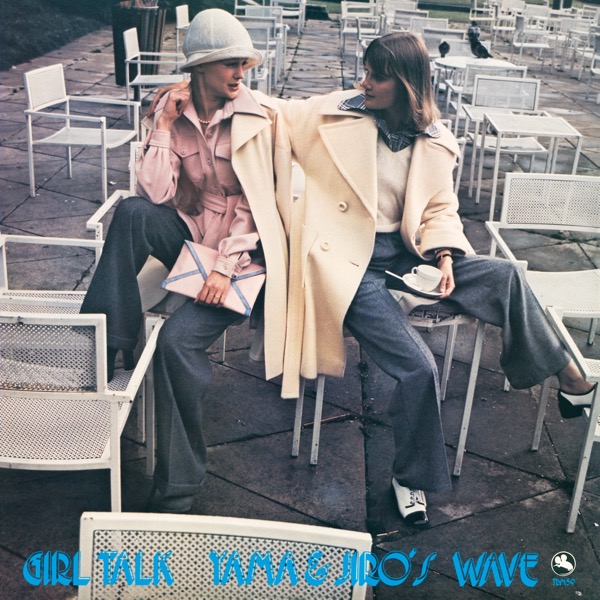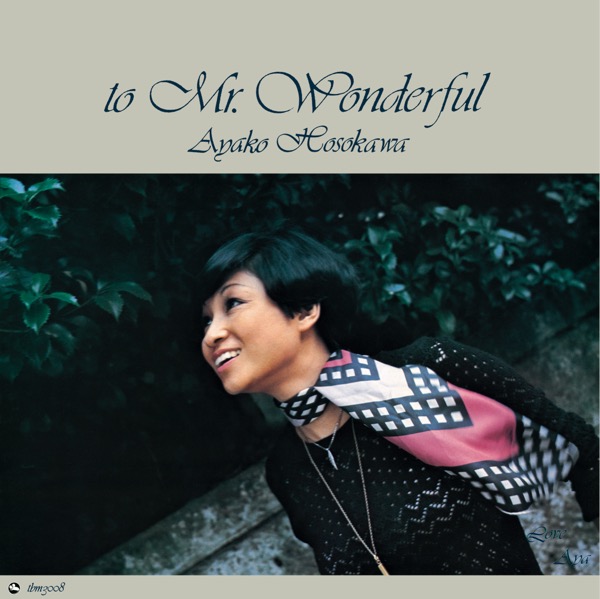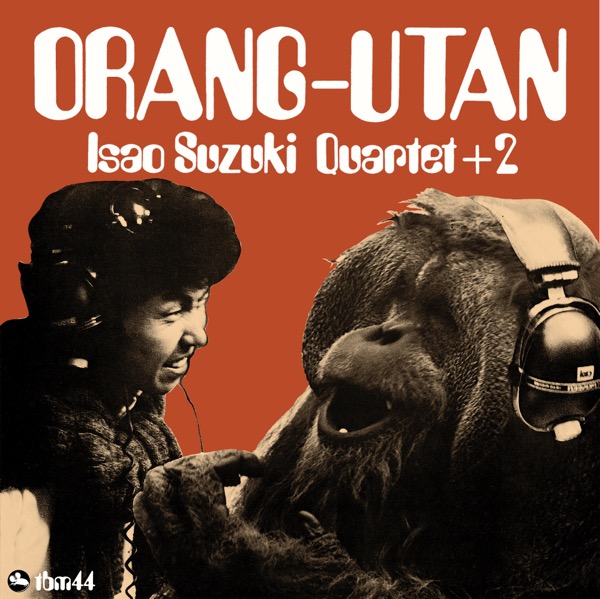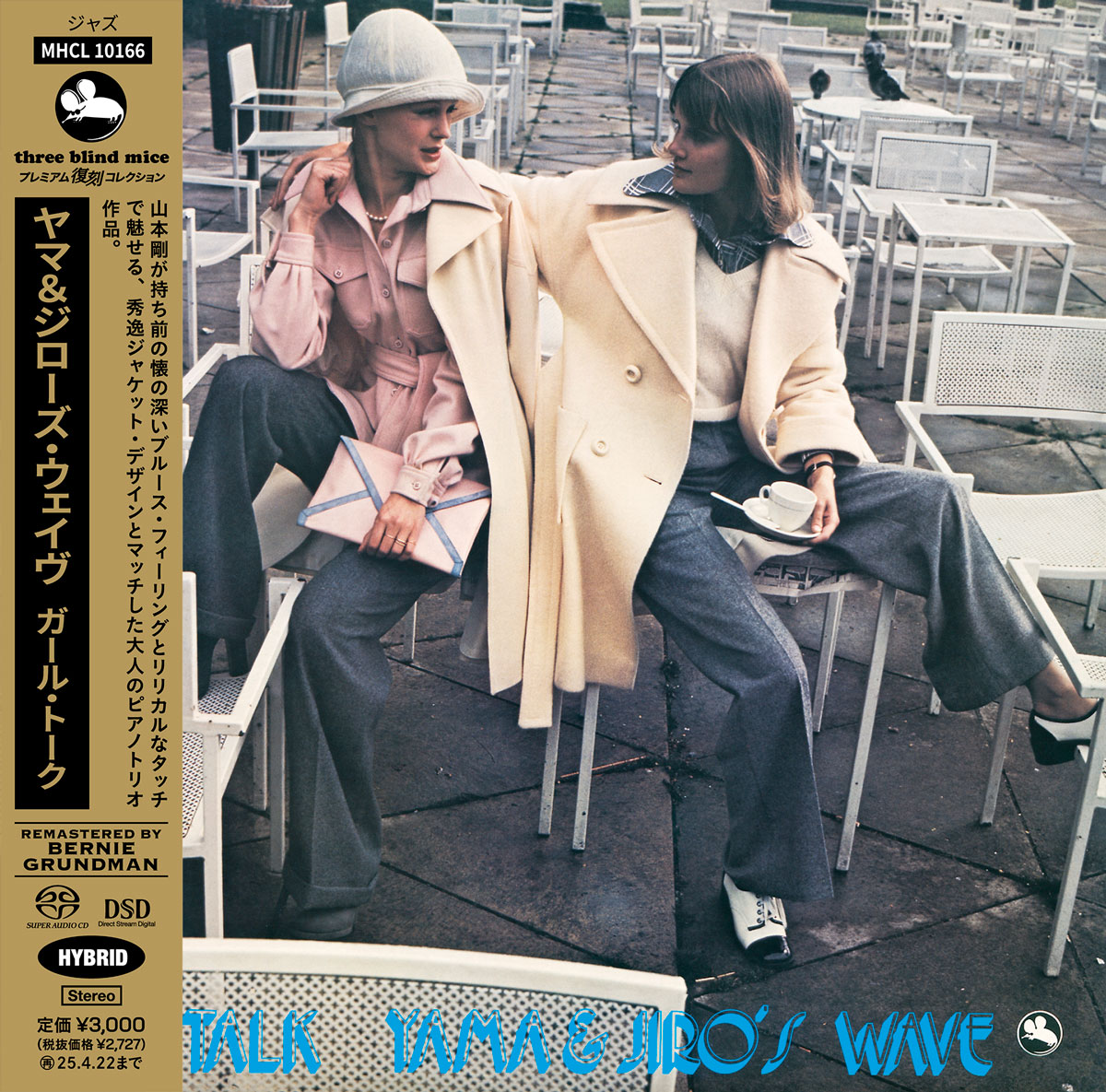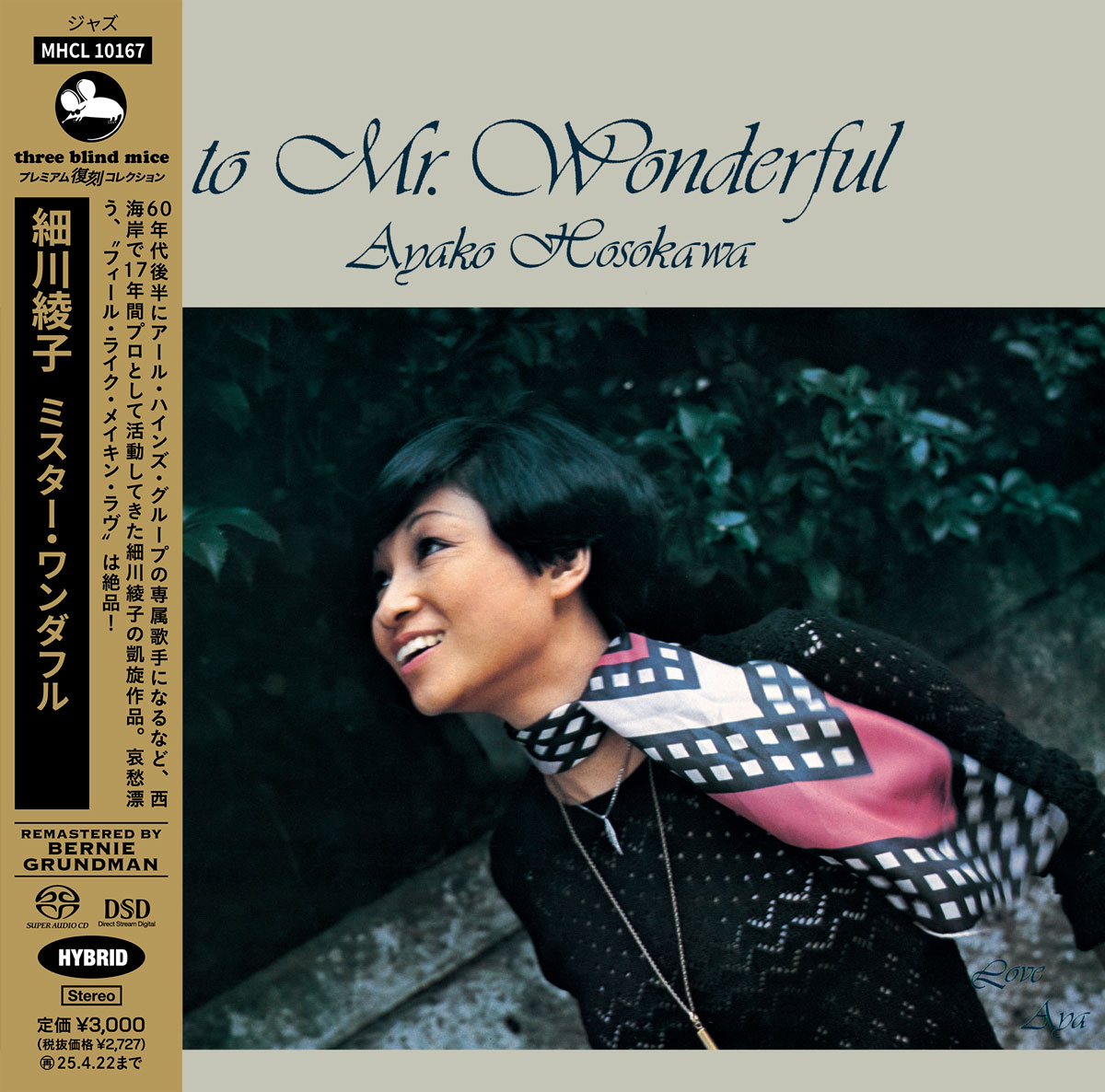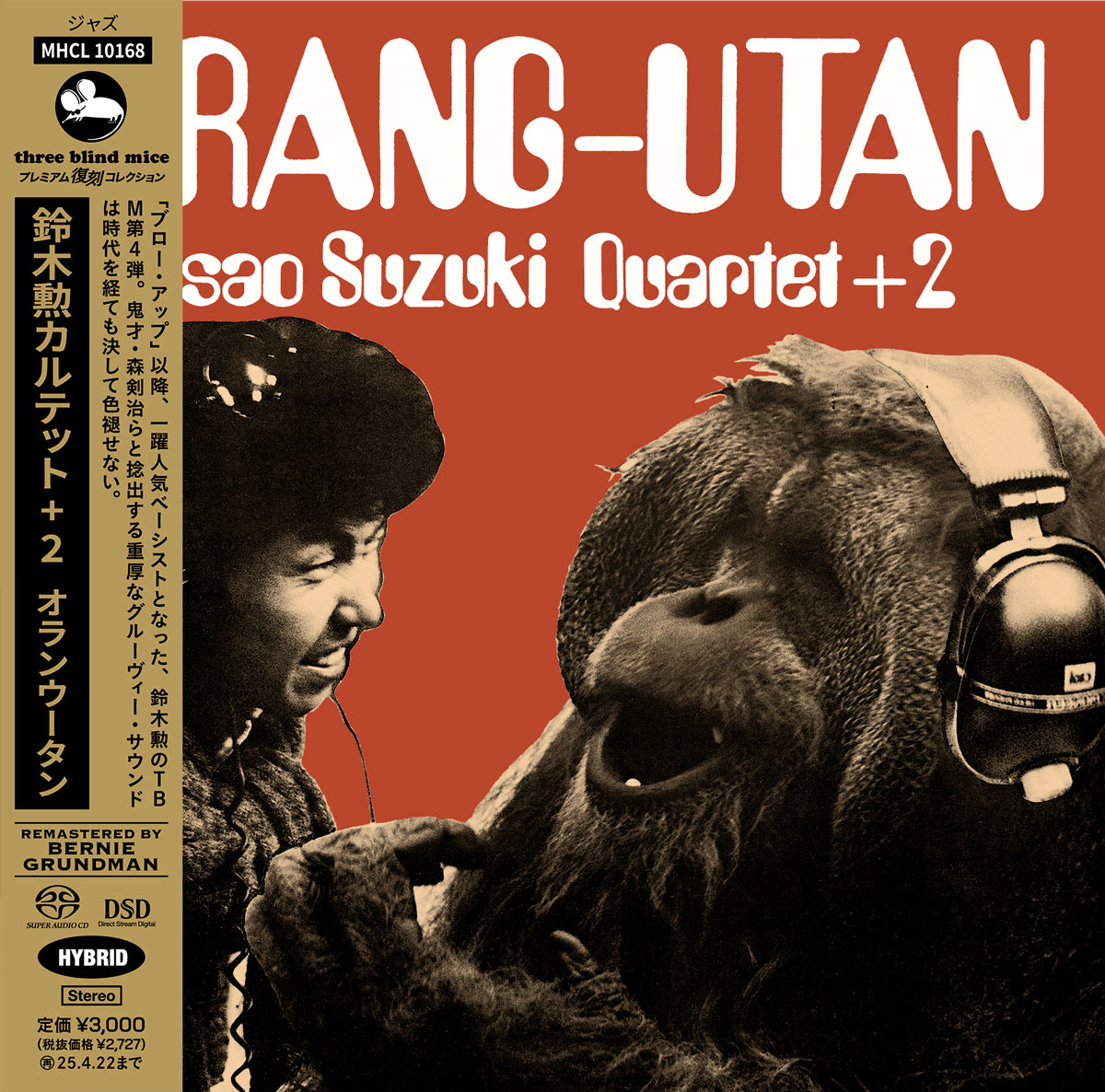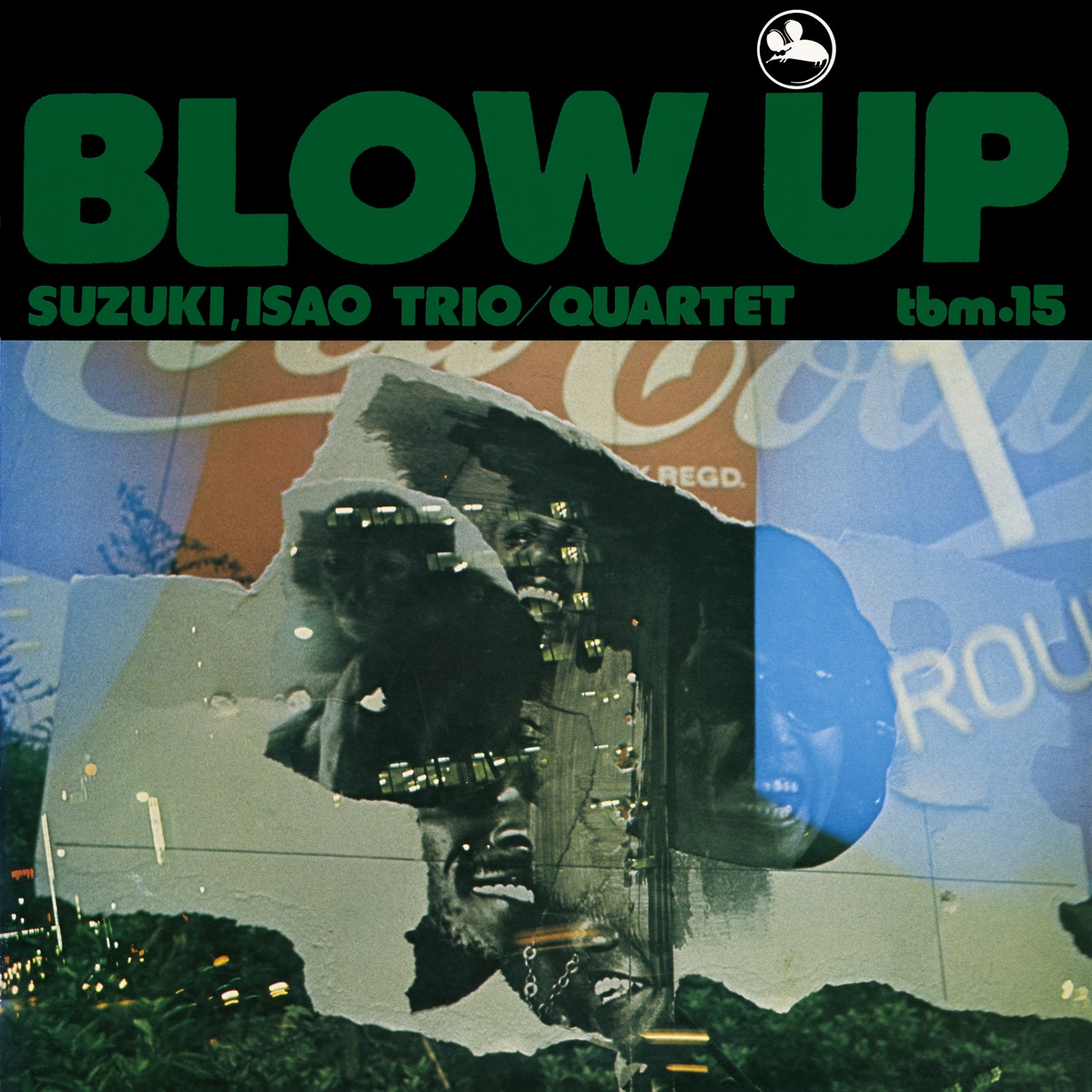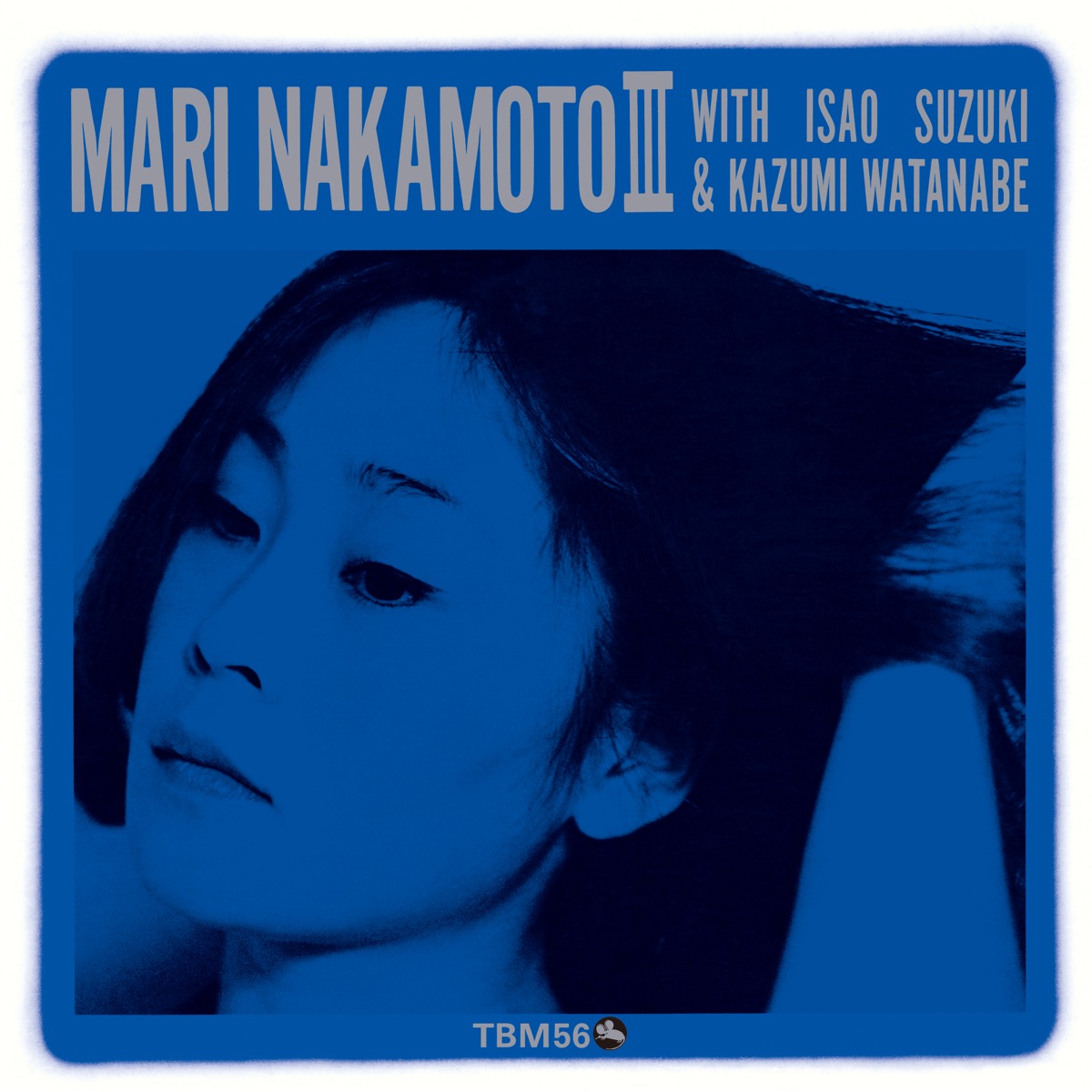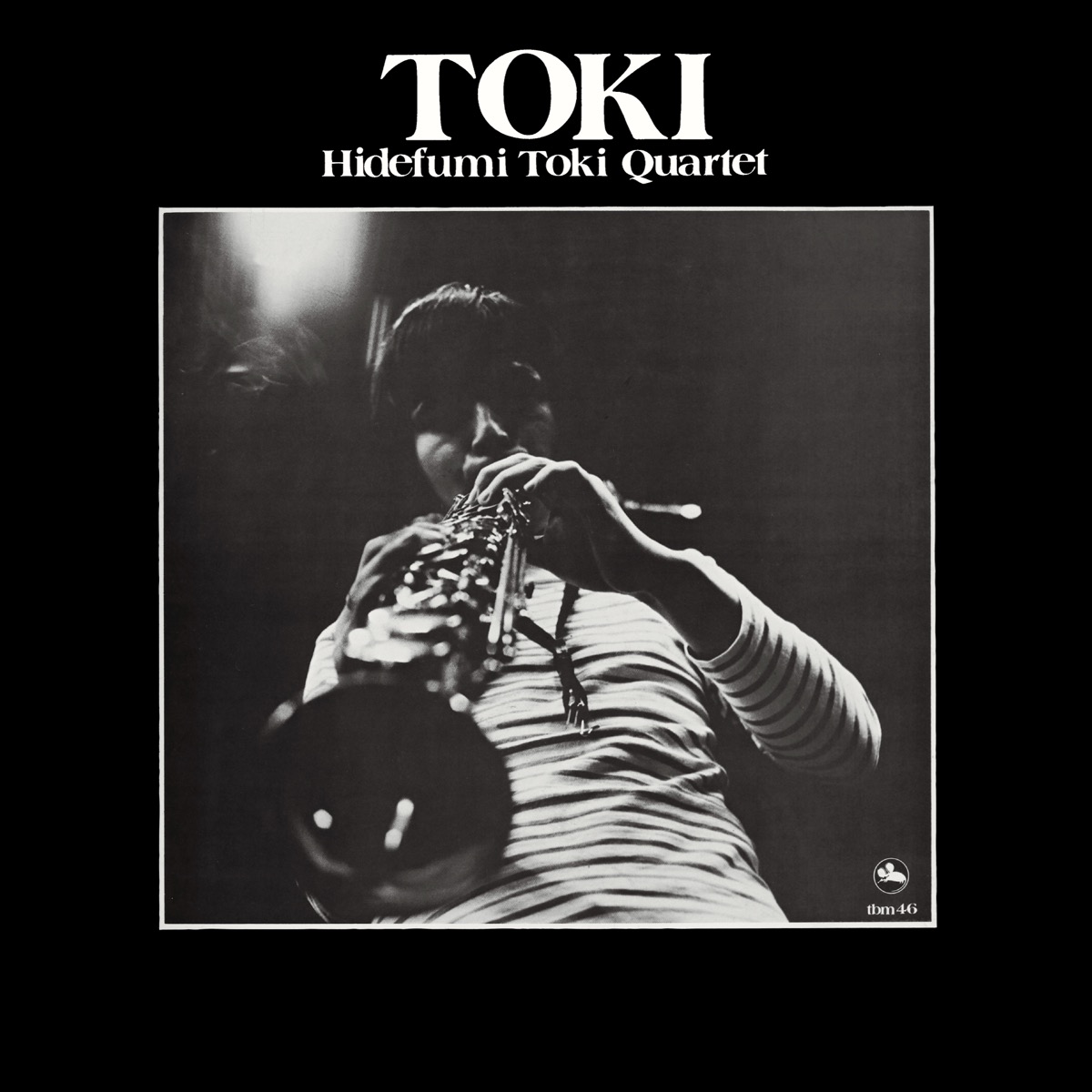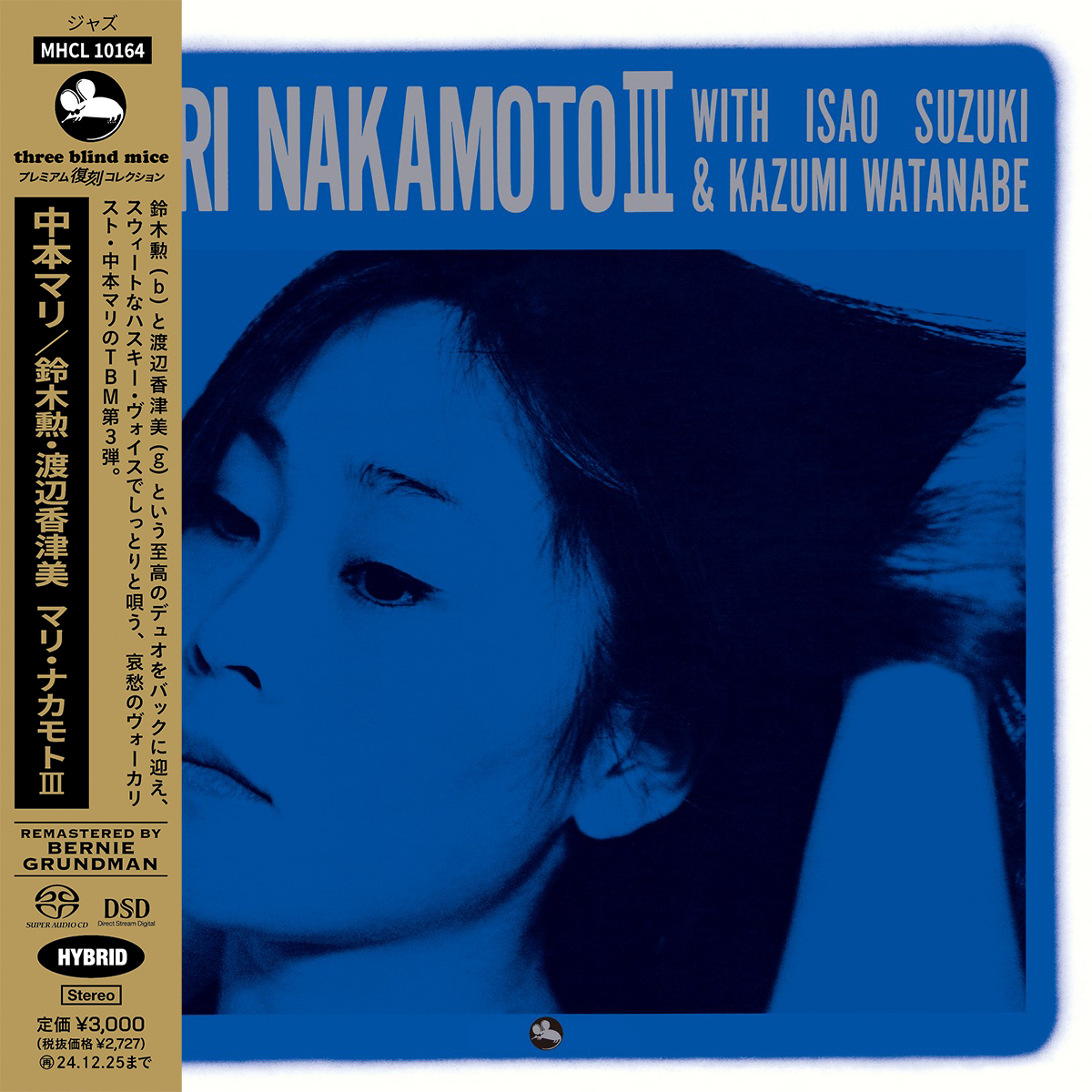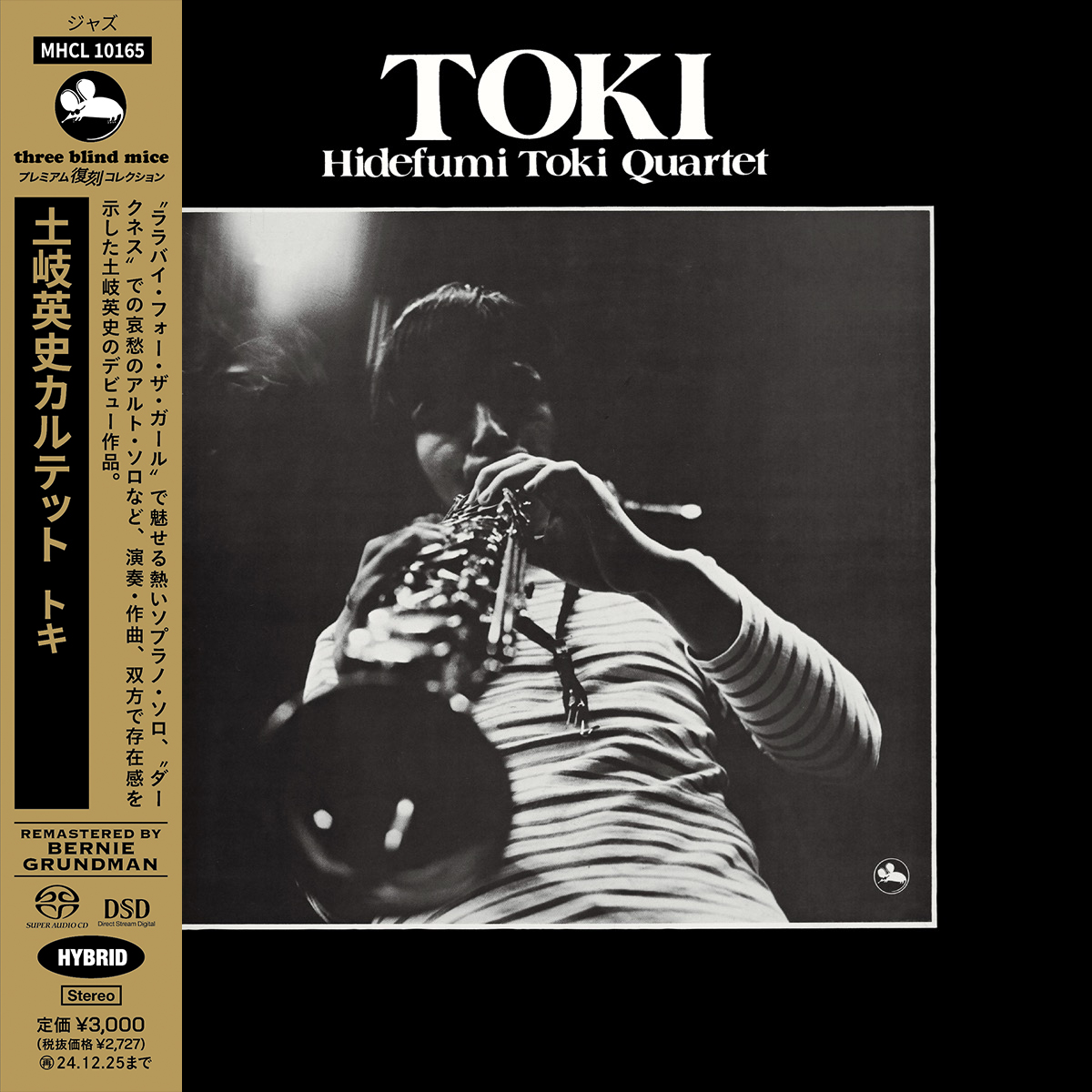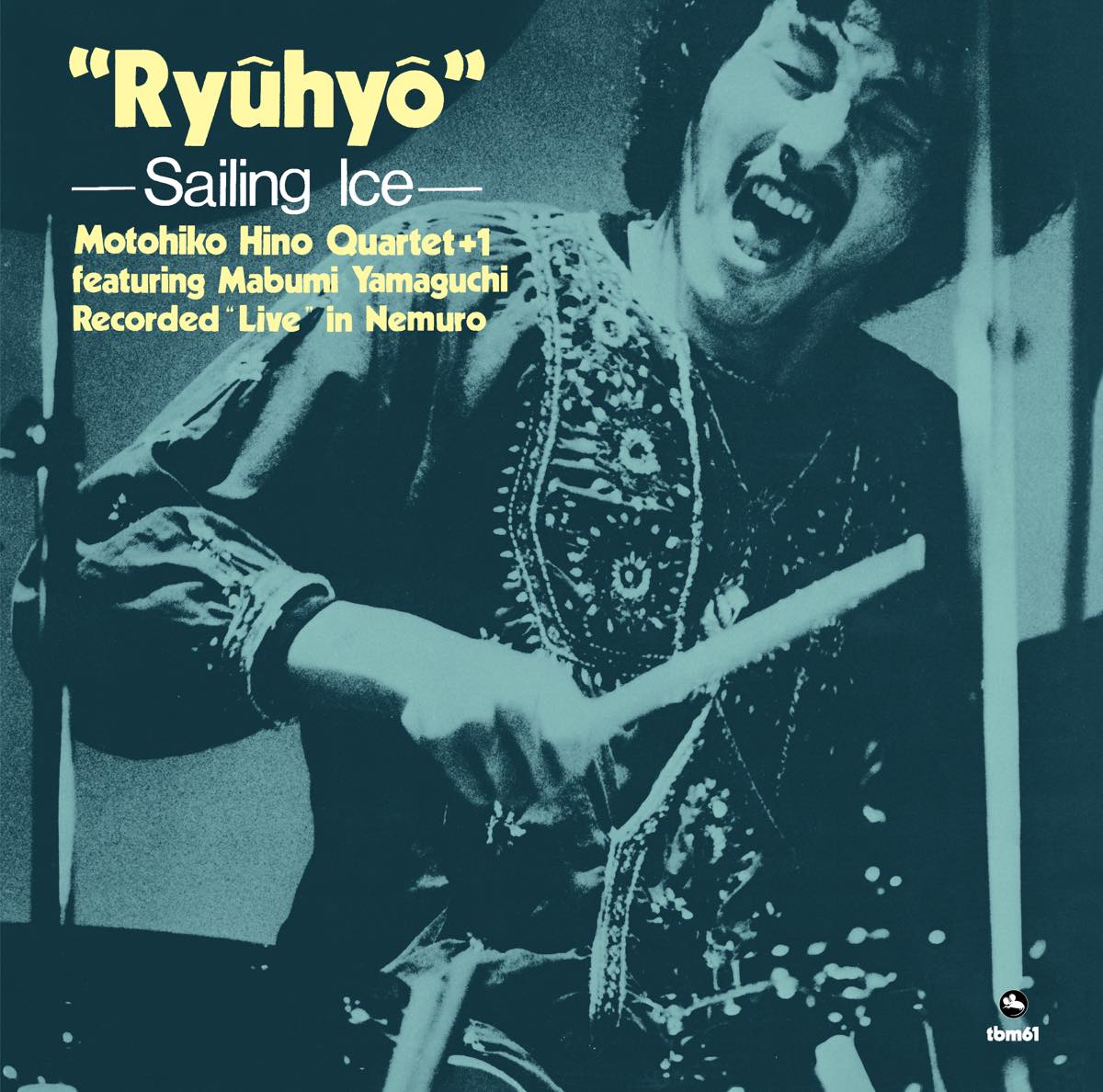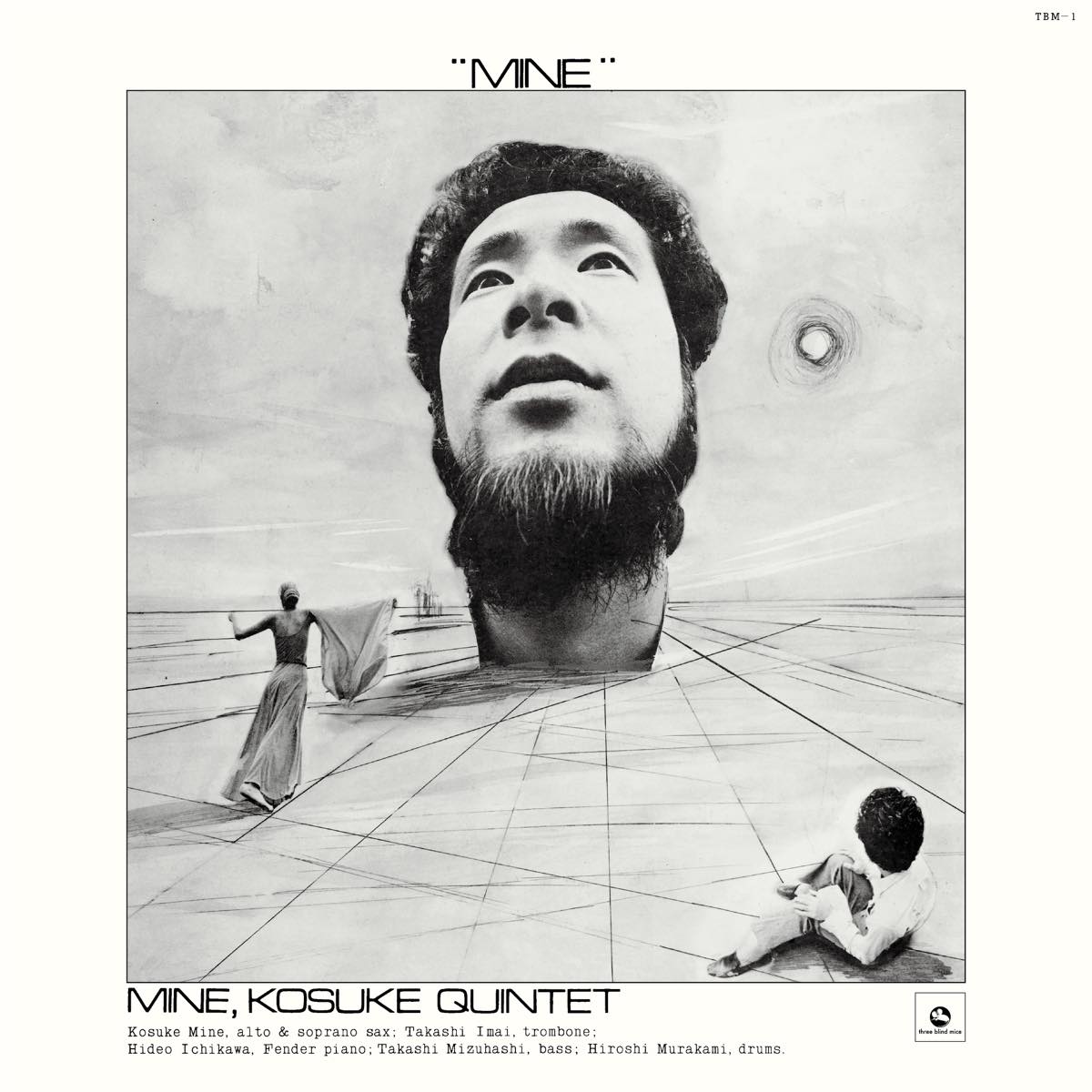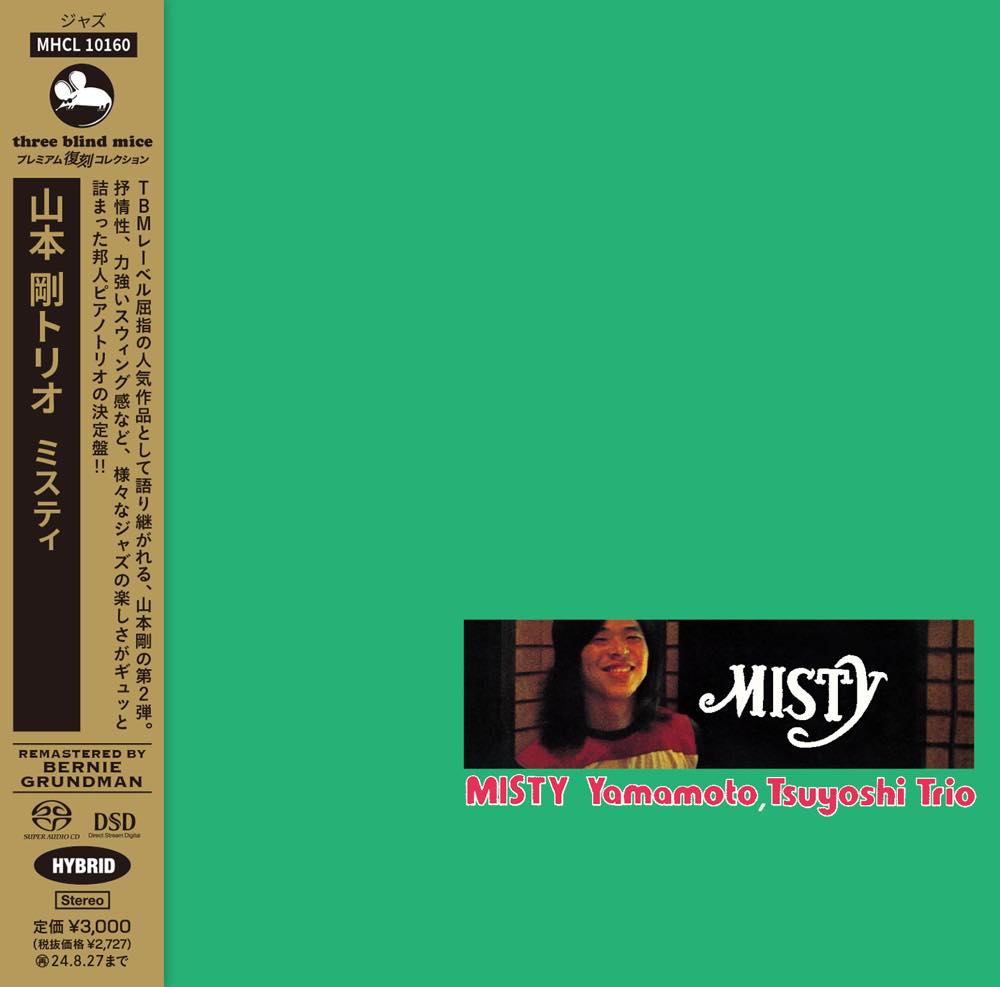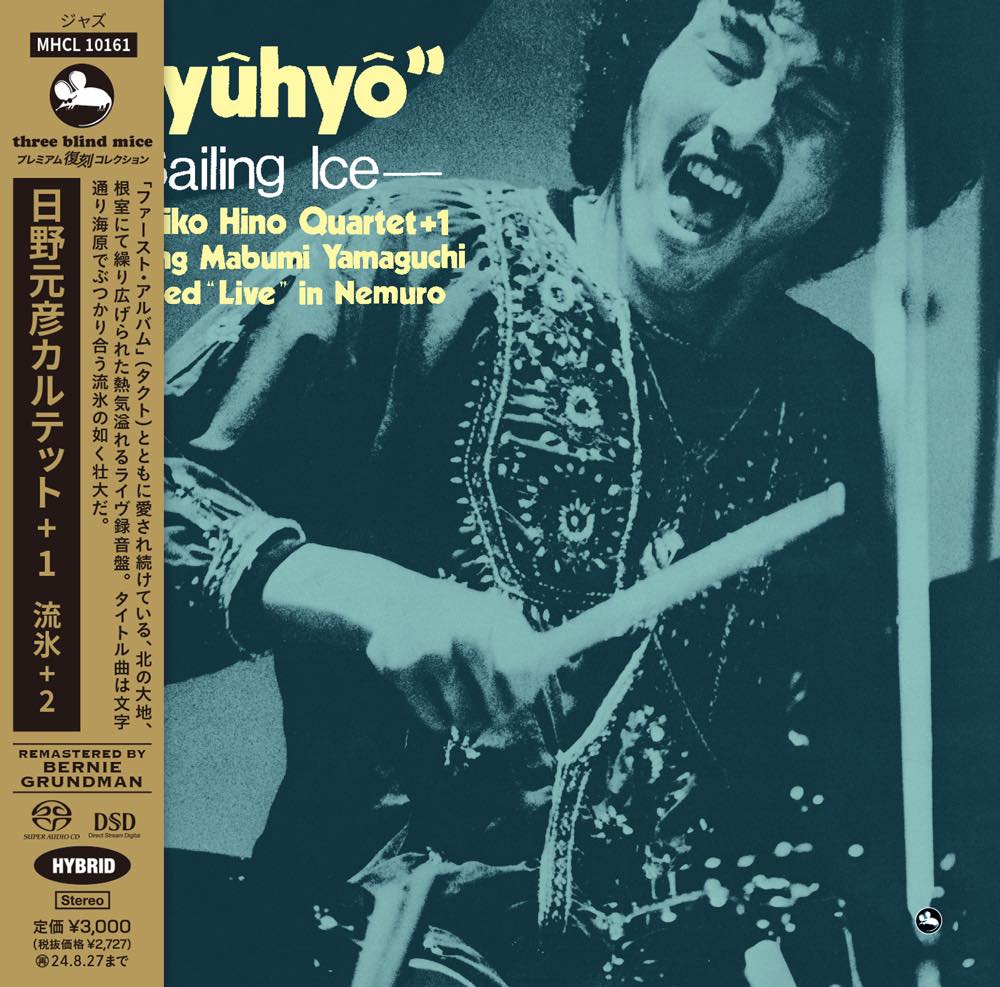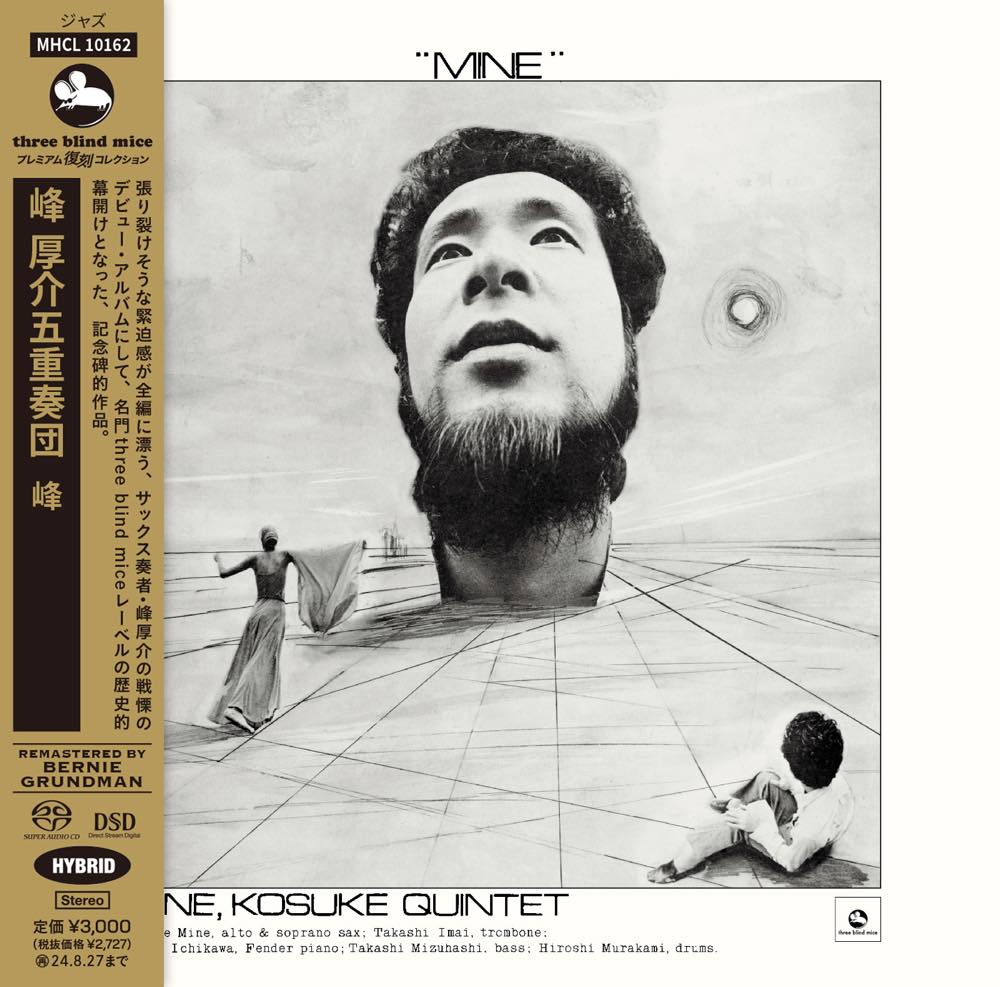

“スリー・ブラインド・マイス” (three blind mice)レーベル、再始動!
海外でも人気の高い「和ジャズ」レーベル、TBMのオリジナル・アルバム「プレミアム復刻コレクション」が、2月28日より発売スタート!
ヨーロッパ、アメリカをはじめ、海外でも人気の高い伝説の「和ジャズ」レーベル、スリー・ブラインド・マイス(TBM)のオリジナル・アルバムをレコードとSACDハイブリッド盤で復刻。価格は、レコード(完全生産限定盤)4,840円(税込)、CD(SACD
Hybrid)3,000円(税込)。
- ■アナログ盤は世界的な音の名匠、バーニー・グランドマンがリマスタリング&カッティングを担当、オリジナル・アナログテープから原音に忠実にラッカー・カッティングを施している。180g重量盤仕様で、オリジナル復刻のライナーノーツ封入。当時のオリジナル盤に付属したオビも再現している。
- ■SACDハイブリッド盤も、リマスタリングはバーニー・グランドマン。オリジナル・ライナーノーツがブックレットに掲載される。
- ■シリーズ監修は、元(株)ディスクユニオン・ジャズ・リーダー/現(株)ジャッジメントエンターテインメント代表取締役の塙 耕記氏。
第I期・第3回/2024年10月23日発売
▲▲▲ CLICK ▲▲▲
山本剛が持ち前の懐の深いブルース・フィーリングとリリカルなタッチで魅せる、秀逸なジャケット・デザインとマッチした大人のピアノトリオ作品。
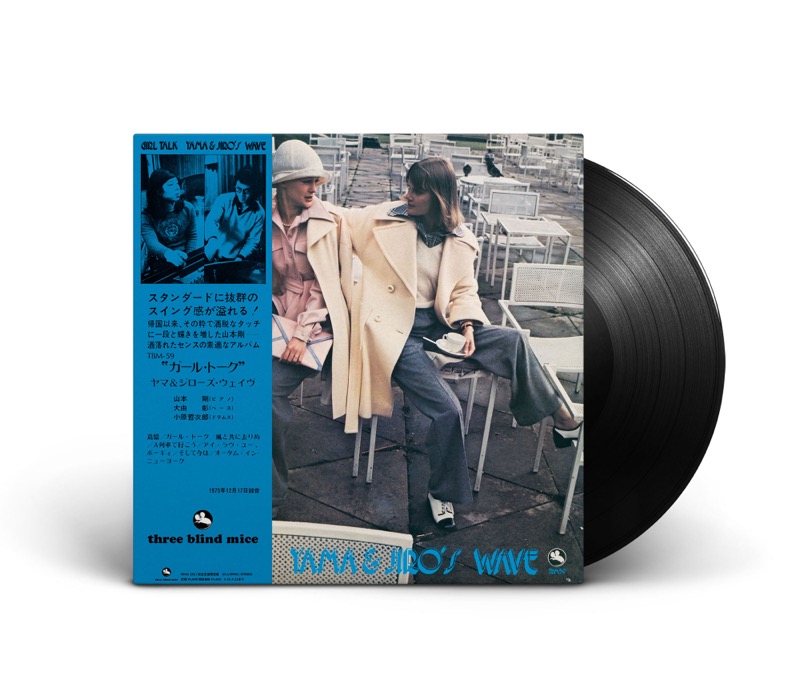
ヤマ&ジローズ・ウェイヴ(山本 剛トリオ)/ガール・トーク
品番:MHJL 356 [LP 12inch/33rpm]
価格:¥4,840-(税込)
※ 完全生産限定盤
【収録曲】[LP] CD
- [A1] 1. 追憶
- [A2] 2. ガール・トーク
- [A3] 3. 風と共に去りぬ
- [B1] 4. A列車で行こう
- [B2] 5. アイ・ラヴズ・ユー、ポーギィ
- [B3] 6. そして今は
- [B4] 7. ニューヨークの秋
山本剛(p)/大由彰(b)/小原哲次郎(ds)
録音:1975年12月17日
オリジナル発売:1976年
60年代後半にアール・ハインズ・グループの専属歌手になるなど、西海岸で17年間プロとして活動してきた細川綾子の凱旋作品。哀愁漂う、"フィール・ライク・メイキン・ラヴ"は絶品!
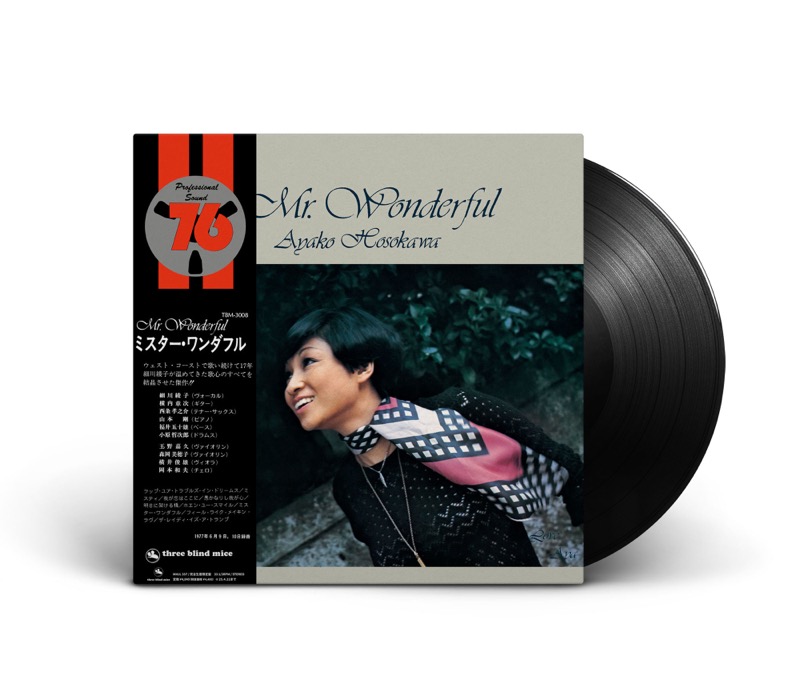
細川綾子/ミスター・ワンダフル
品番:MHJL 357 [LP 12inch/33rpm]
価格:¥4,840-(税込)
※ 完全生産限定盤
【収録曲】[LP] CD
- [A1] 1. ラップ・ユア・トラブルズ・イン・ドリーム
- [A2] 2. ミスティ
- [A3] 3. 我が恋はここに
- [A4] 4. 愚かなりし我が心
- [B1] 5. 明日に架ける橋
- [B2] 6. ホエン・ユー・スマイル
- [B3] 7. ミスター・ワンダフル
- [B4] 8. フィール・ライク・メイキン・ラヴ
- [B5] 9. ザ・レイディ・イズ・ア・トランプ
細川綾子(vo)/横内章次(g)/西条孝之介(ts)/山本剛(p)/福井五十雄(b)/小原哲次郎(ds)/他
録音:1977年6月9、10日
オリジナル発売:1977年
「ブロー・アップ」以降、一曜人気ベーシストとなった、鈴木勲のTBM第4弾。鬼才・森剣治らと捻出する重厚なグルーヴィー・サウンドは時代を経ても決して色褪せない。
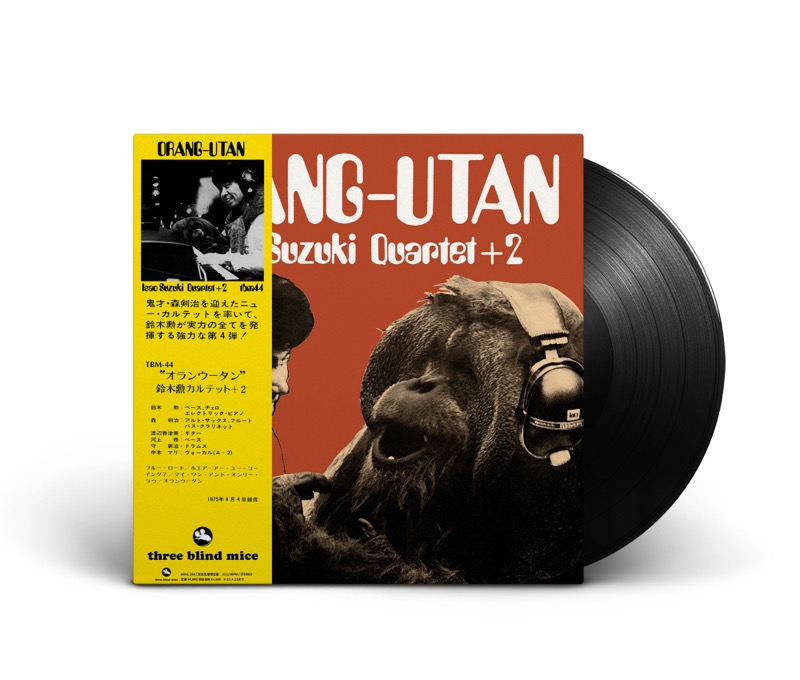
鈴木 勲カルテット+2/オランウータン
品番:MHJL 358 [LP 12inch/33rpm]
価格:¥4,840-(税込)
※ 完全生産限定盤
【収録曲】[LP] CD
- [A1] 1. ブルー・ロード
- [A2] 2. ホエア・アー・ユー・ゴーイング?
- [B1] 3. マイ・ワン・アンド・オンリー・ラヴ
- [B2] 4. オランウータン
鈴木勲(b, cello, el-p)/森剣治(as, fl, b-cl)/渡辺香津美(g)/河上修(b)/中本マリ(vo: A-2)
録音:1975年4月4日
オリジナル発売1975年
Review by Yoshio Gyoda
Tsuyoshi Yamamoto has released yet another album in which he takes the lead. This is the 6th one. For your information, the albums released so far are;
1. ‘Midnight Sugar’ TBM-23
2. ‘Misty’ TBM-30
3. ‘Live At The Misty’ TBM-37
4. ‘Blues For Tea’ TBM-41
5. ‘The In Cloud’ TBM-52
The one thing that all six albums released by TBM have in common in which he takes the lead, including this one, is that, first of all, they were all recorded by a trio. Secondly, out of a total of 32 songs included, 5 are Yamamoto originals, and although there are a few musical numbers, movie theme songs, chansons, and popular songs, the rest are overwhelmingly standard numbers.
It's such a joy to see Yamamoto breathe new life into masterpieces that have been fostered and perfected by many musicians over the years, and it even makes me feel the joy of listening to jazz.
Tsuyoshi Yamamoto was born in Niigata in the early spring of 1945, amid the lingering snow. He will be 28 years old this year. He was forced to learn the piano by his parents, but he couldn't stand it, so he quit before finishing Beyer piano instructional book for beginners when he was in the 6th grade of elementary school. Proceeding from junior high school in the city to Meikun High School, Yamamoto became interested in the trumpet and joined a brass band. During that time, he was listening to Cannonball Adderley's ‘Work Song’, which was a huge hit at the time, and Art Blakey's ‘Moanin'’ and ‘Les Liaisons Dangereuses’, etc. At the invitation of a fellow jazz lover, he started playing the piano for the first time in years just by listening to it. This was the birth of jazz pianist Tsuyoshi Yamamoto. Even after he entered Nihon University, his passion for jazz continued to grow, and he dropped out after two years and joined Mickey Curtis' band, who were looking for a pianist to travel to Europe. He traveled to France, Switzerland, and England for about half a year, training as a professional musician. He says he still remembers listening to the Kenny Clark Orchestra with Johnny Griffin at the Ronnie Scott’s Jazz Club in London. Due to some troubles within the band and a bit of homesickness, Yamamoto returned to Japan alone, and traveled from place to place in search for work, aiming to become a full-fledged jazzman. He worked at a cabaret in Ginza and a club in Aoyama, gradually improving his skills. After that, he joined ‘Ricky & 960 Pounds’, but returned to Ginza again. As mentioned above, Yamamoto knows standard numbers surprisingly well and is so good at them, and that is probably because he naturally acquired the ability while responding to requests from customers who have a glass of wine in their hands.
**
It is well known that how he has built his remarkable career since 1974, when he started appearing at Roppongi jazz club ‘Misty’. As is clear from above, even though Yamamoto is a completely self-taught piano player, there is no hint of any lack of skill. Is it because of this tenacious ambition, which is a unique tendency of people from Tohoku, or is it something natural? His play has a jazzy feel that could be mistaken for the one of a black player, and his true potential is shown in his stylish swinging songs. For me, who loves Errol Garner, Red Garland, Wynton Kelly, etc., Yamamoto's piano style, which follows their trend, continues to bounce lightly and happily in my heart today.
Co-stars Akira Daiyoshi and Tetsujiro Obara have played on several sessions with Yamamoto, and their perfect combination is nothing short of exquisite. In particular, Obara's drumming is excellent for this type of piano trio, a valuable co-existence.
I would like to write my thoughts on each song played on this album as below.
Side A
1. The Way We Were
Although Unfortunately, I missed the movie ‘The Way We Were’ starring Barbra Streisand and Robert Redford, I haven't come across a film score with such beautiful and lyrical sentiments recently. The theme appears from the intro, and with a bow-based ensemble and mellow drum brushes, Yamamoto plays ephemerally and with melancholily, with rich poetic emotion and unparalleled beauty. As is the case with Mal Waldron's ‘All Alone’, most movie theme songs that are popular with Japanese people seem to have this kind of mood. Among the songs included on this album, it is the simplest and most outstanding work that directly touches the heart of the listener. The modest support from the two sidemen is very pleasant.
2. Girl Talk
It is this album's title tune and a masterpiece by Neil Hefti. After presenting an impressive theme at a slightly slower tempo, Yamamoto develops the song while with his signature blues feel. Daiyoshi's bass, which is gentle and sometimes sharp, skillfully inspires Yamamoto.
3. Gone With The Wind
The song progresses at a fast swing tempo, and Yamamoto's right hand rolling over the keys is really fun. Don't miss his powerful touch in the block chords in the middle. Daiyoshi's bass is also expressed in a harmonious interpretation.
Side B
1. Take The “A” Train
A timeless masterpiece which is composed by Duke Ellington and played by Billy Strayhorn, with a very elaborate arrangement. Using a free jazz approach for the intro, the tempo gradually increases, giving a sense of speed as if a train is departing, before the theme then emerges.
2. I Loves You, Porgy
George Gershwin's slow ballad. I really like the way Yamamoto fully expresses his feelings in these songs. If possible, I'd like to listen to these songs while holding a glass of vintage brandy in my right hand and a nice lady in my left.
3. What Now My Love
It was a hit song by chanson singer Gilbert Bécaud. As I was listening to it, I realized that no matter what kind of song it is, he puts it all together neatly in his ‘yamamoto-bushi’. It seems that Yamamoto has a solid view of music, and he sublimates it beautifully within his style. This may also be the secret to Yamamoto's popularity.
4. Autumn In New York
Vernon Duke's song is placed appropriately as the last number on this album. Yamamoto's sparkling touch shines brightly through the mellow atmosphere, signaling a quiet end.
Translated by YUKO M. DARWEN
‘The song is the person’ by Yoshifuru Takeichi
Tsuyoshi Yamamoto has released yet another album in which he takes the lead. This is the 6th one. For your information, the albums released so far are; 1. ‘Midnight Sugar’ TBM-23 2. ‘Misty’ TBM-30 3. ‘Live At The Misty’ TBM-37 4. ‘Blues For Tea’ TBM-41 5. ‘The In Cloud’ TBM-52
I have always written that “the song is the person”. What I meant was, just as a writing style in literature is an expression of the personality of the person who wrote it, a song that is sung with the singer’s unique style is a real song, and no matter how good the singer’s technique might be, as long as you cannot get a sense of the singer's individuality from the song, it must be a fake song.
The terms ‘technician’ and ‘stylist’ should never be considered in the same light, and confusing them leads to misconceptions in evaluating singers. For example, there is a song called ‘Mr. Wonderful’ here, and even if you sing it with the correct pitch, tempo, and interpretation of the lyrics, unless the song stands out as a ‘Mr. Wonderful’ with a certain personality, it is just a song sung by a technician. You can’t say it is a stylist’s song.
Let's get straight to the point. Ayako Hosokawa's songs are wonderful. She is a genuine singer full of charming personality. In addition to her technique, her songs have a gentle and heartwarming feeling that captures the heart of those who listen to her.
My opinion is that good songs should be sung honestly, but all of Ayako Hosokawa's songs are sung in a way that is humanly compatible with her own ideas while keeping the spirit of the original song alive. Therefore, the authenticity of the original song is fully expressed, and, at the same time, her personality underpins the song.
Ayako Hosokawa is a singer with good taste. You can clearly see that by looking at the song selection for this album, which has a good selection of ballads and fun swinging standard numbers. There are only two relatively new songs: "Bridge Over Troubled Water" and "Feel like Makin' Love". "Mr. Wonderful," "Misty," "Wrap Your Troubles In Dreams", and "When You Smile" are the songs that even people who aren't vocal fans have probably heard at least once. Ayako Hosokawa performs these so-called masterpieces without any pretention and in a straightforward manner. It is a trick that can only be achieved by a seasoned entertainer.
Ayako Hosokawa's singing is so good that it's hard to believe that a Japanese person is singing English songs. She uses English as a daily language, so as expected, she is excellent at putting emotions into words and having a good grasp of sentences, etc.
Ayako Hosokawa was born on May 5, 1938 in Azabu, Tokyo, so she is currently 39 years old. This is the age when she has matured as a woman and as a human being.
She began singing jazz at a US military camp when he was 14 years old, and became a band singer for the Blue Coats Orchestra at 16. Her singing coach was Kuranosuke Hamaguchi, who was a friend of her father.
At the age of 18, she recorded popular jazz at Columbia Records, backed by Shin Watanabe’s Six Joes. Four years later, she got married at the age of 22. She went to San Francisco with her American husband, and their first daughter Josephine was born.
In 1965, she was discovered by Earl “Fatha” Hines and began singing with his band. It was also around this time that she appeared at (Music Cross Road), a store run by Earl Hines in Oakland.
It was shortly after that when I met Ayako Hosokawa, so it's already been 12 years. I had been living in Las Vegas at the time, and went over to San Francisco to work, and performed an oriental show at a nightclub called BIMBO'S 365. Ayako Hosokawa was the star singer of the show. I still remember when I heard songs like ‘Mack the Knife’ and ‘Hello Young Lovers’ at the audition, I was surprised that there were such good singers in Japan. She was a good driver too. She was driving a new Thunderbird, and she not only gave me a lift to work, but also took me everywhere.
Ayako Hosokawa thoroughly experienced the bitter side of the phrase “There's nothing like a show”. There's nothing you can do because you don’t have any work. She started working at the Los Angeles branch of the Bank of Tokyo. Around this time, she ended her 10-year marriage and was living with Josephine and her mother who had come from Tokyo.
I once received three cassette tape letters at once, each of which was two hours long, so it was a total of six hours listening. As Ayako mumbled about her current situation in a very tired voice, I could almost see the look on her face, buried in her daily life, and I couldn't help but burst into tears. Her bright, swinging singing voice that seemed to be enjoying life wasn't there.
Suddenly, I received a copy of the Los Angeles Times, which had a review written by Leonard Feather raving about Ayako Hosokawa. This was in 1975, about two years after I received the six-hour cassette tapes.
I don't know what happened to Ayako Hosokawa, however, her songs were reborn. I believe that from this time on, she joined a company of adult singers who could sing real songs. Ayako Hosokawa's songs had been good, but lacked something touching the heart, but one day, the songs finally came to fruition.
This album is structured as Ayako Hosokawa's life itself in a way. In addition to the good taste in song selections, the structure of the numbers is great. When I listen to Ayako Hosokawa's ‘Mr. Wonderful’, while satisfied with the quality of the arrangement and the wonderful support of the backing musicians, I feel the weight of the saying, “The song is the person”.
Translated by YUKO M. DARWEN
Review by Osamu Uchida
(I) “Oh! Isao Suzuki ended up at the top of the popularity vote”
Those of you reading ‘Swing Journal’ should already know that our “Omasan” has finally become the pole winner in the bass category. It would be pitiful to say that it might be because Yoshio Suzuki, also known as "Chin-san", who has been at the top for a while, moved to the United States, but what a blessing!
Even so, Isao Suzuki had a long journey. As I've written before, I've known him for more than 10 years. He was a man with an outstanding sense of rhythm, but if anything, he was a player for experts. In other words, when he played, his fellow bass players listened intently, and in a way, he had a thing for musicians. Therefore, it can be said that in general he was not easily understood. Generally, a bassist is low-profile, one that silently beats out a rhythm and doesn't really stand out.
But what he was doing was the real deal. His every note was strong and precise, and had a sense of beat that made the entire band swing powerfully. What's more, the rhythm is sticky and thoroughly black musician like. It would be harsh to say that his excellence as a bass player is nothing more than fulfilling the minimum requirements of a jazz bassist, but in the reality of jazz, there is a tendency for fakes who lean toward the avant-garde and play flashy phrases all over the place in an artificial way to become popular. It was nice to call it a "diversification of jazz," and it may have been fortunate for Isao Suzuki that as we were approaching the mid 70’s, the essential goodness of jazz was beginning to be widely recognized again. It was only natural that at the same time that “Blow Up'' gained explosive support, his bass play also became highly rated by most fans.
On the other hand, since he does not belong to a production company and does not have a manager, he is a lone wolf. He himself negotiates and obtains work not only at jazz cafes in Tokyo but also in every corner of the countryside. Then, he would easily go anywhere leading his talented musicians, which makes you want to call them “Omasuzu family”. His playing style is very serious and strict, and above all, he swings powerfully.
It's such a fun performance I want to make people who say “Jazz is difficult'' listen to it first and foremost, so it would be strange if it didn't become popular. On a different note, I just happened to have finished reading C. Parker's biography called ‘Bird Lives!’ and I have been completely moved by his amazing way of life. I belatedly feel that, precisely because Parker grew up in Kansas City and has walked the path of hardship with blues, even as he created the innovative playing method called ‘Bop’, the soul of the blues pulsating in the undercurrent strikes my heart. Of course, it may be a little strange to discuss Isao Suzuki along with Parker, but I believe that his playing (which includes not only his main instrument, bass, but also the wide variety of musical instruments he plays as well as all his works) is loved by jazz fans because, through a long experimental process, he never loses his attitude of valuing the blues the most in the jazz scene.
(II) “Kenji Mori's play is getting sharper and sharper.”
Isao Suzuki stopped by the other day. “I would like to invite Kenji Mori to my next recording session. How is he playing lately? If you have a record or tape, please let me listen to it.”
You may be wondering why he is asking me such a thing, but Mori currently lives in Nagoya, and when he originally came from Kyoto with just one instrument, it was in the Tokai region that he became a professional musician. He was gentle and even ‘naïve’ and could be called a handsome boy, but I think it was lucky that he joined a group called ‘Soul Notes’ led by a big-brother type (drummer) Tokuji Yasuma, who had trained several talented people. The leader, Yasuma, may seem like a gentle man, but he is very strong-willed and has a mentality that no matter where you work, let’s play the jazz that we like. There, Mori pursued C. Parker earnestly, to his heart's content. Masayuki Takayanagi set his eyes on the brilliant performance and invited Mori, who later moved to ‘Hideto Kanai & King's Roar’, to join ‘New Direction’. Takayanagi always admired Mori and said, ”Mori will become a great reedman in the future”.
Of course, Mori was not unknown to “Omasan”. Naturally, he must have heard Mori play at events such as TBM's ‘5 Days in Jazz’. However, the focus of “Omasan”’s interest may not have been Mori’s avant-garde style with Takayanagi, but rather his alto playing with Sunao Wada and co., which had a feel full of blues, and the refreshing flute tone behind the vocals.
After listening to this record, I think that Mori has lived up to our expectations splendidly, and among them, his freewheeling ad-libs on the title track are an impressive display of his true potential.
Just the other day, I met Mori in Nagoya. It was at the venue of a mini-concert by Kazumi Watanabe, who is steadily establishing his own style. When I asked Mori “How are you doing? Are you working properly?” he said “Yes. I’ve had a lot of recording opportunities recently and I’m really excited about it. I have the tape right here, so please give it a listen.” with a confident look on his face, which is unusual for such a quiet person, and handed me the newly finished tape. Immediately after that, I met him again at a concert with local jazzmen, led by Masahiko Togashi, who had come to Nagoya alone. Apparently, the day before, Mori sat down with Togashi to talk and let out various doubts about his own music, and in a duet with Togashi, he expressed a level of ‘gentle beauty’ that I’ve never seen before, completely surprising me.
(III) “Shirley Horn?”
A-2 ‘Where Are You Going?’ is a song by Shirley Horn (a black female musician). Mr. Suzuki copied it from FEN and had Mari Nakamoto sing it.
Around the 1960s, S. Horn was a talented singer with a husky voice who attracted the attention of Miles Davis and got the chance to record. I remember being impressed by the singer Mari Nakamoto as someone with good qualities. I think it's truely admirable how well she digests S. Horn's elaborate and difficult piece, and above all, it's good not to get too eager. This vocal is also a highlight of the LP, and is very attractive.
Kawakami and Mori (Shinji), who support all songs, are current regulars for Sadao Watanabe and are promising new talents. And there is no need to add anything about Kazumi Watanabe.
The entire album is well-organized centering around Isao Suzuki, with a soothing beat throughout.
Translated by YUKO M. DARWEN
第I期・第2回/2024年6月26日発売
▲▲▲ CLICK ▲▲▲
最強メンバーによる好演奏、洗練されたジャケット・デザイン、オーディオ・ファンも認める高音質、と三拍子揃った、TBMレーベルの代表作品かつ日本ジャズ史上の宝物。
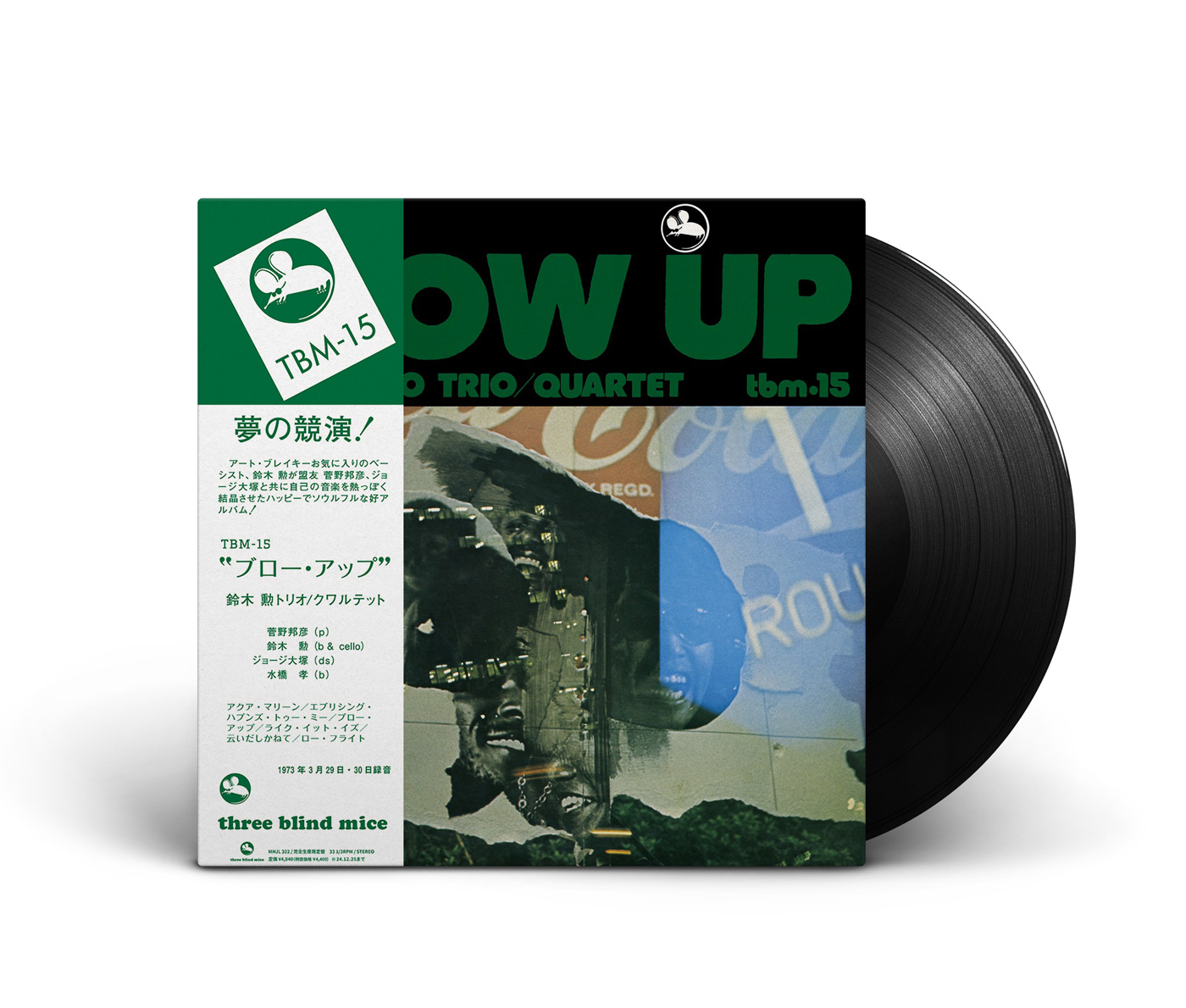
鈴木 勲トリオ / カルテット/ブロー・アップ
品番:MHJL 322 [LP 12inch/33rpm]
価格:¥4,840-(税込)
※ 完全生産限定盤
【収録曲】[LP] CD
- [A1] 1. アクア・マリーン
- [A2] 2. エブリシング・ハプンズ・トゥー・ミー
- [A3] 3. ブロー・アップ
- [B1] 4. ライク・イット・イズ
- [B2] 5. 云いだしかねて
- [B3] 6. ロー・フライト
菅野邦彦(p)/鈴木勲(b & cello)/ジョージ大塚(ds)/水橋孝(b)
録音:1973年3月29、30日
オリジナル発売:1973年
鈴木勲(b)と渡辺香津美(g)という至高のデュオをバックに迎え、スウィートなハスキー・ヴォイスでしっとりと唄う、哀愁のヴォーカリスト・中本マリのTBM第3弾。
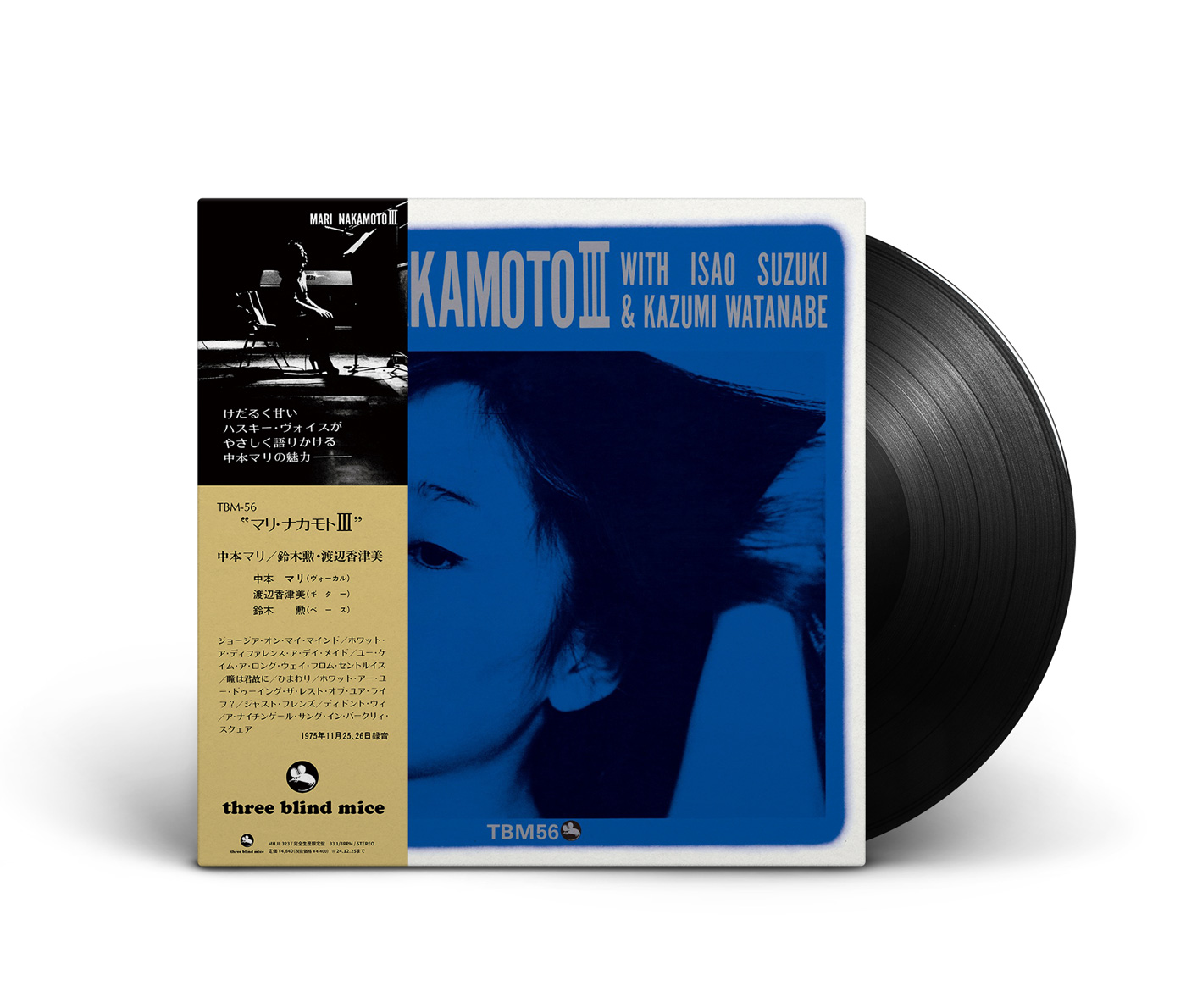
中本マリ/マリ・ナカモト III
品番:MHJL 323 [LP 12inch/33rpm]
価格:¥4,840-(税込)
※ 完全生産限定盤
【収録曲】[LP] CD
- [A1] 1. ジョージア・オン・マイ・マインド
- [A2] 2. ホワット・ア・ディファレンス・ア・デイ・メイド
- [A3] 3. ユー・ケイム・ア・ロング・ウェイ・フロム・セントルイス
- [A4] 4. 瞳は君故に
- [B1] 5. ひまわり
- [B2] 6. ホワット・アー・ユー・ドゥーイング・ザ・レスト・オブ・ユア・ライフ?
- [B3] 7. ジャスト・フレンズ
- [B4] 8. ディドント・ウィ
- [B5] 9. ア・ナイチンゲール・サング・イン・バークリー・スクエア
中本マリ(vo)/渡辺香津美(g)/鈴木勲(b)
録音:1975年11月25、26日
オリジナル発売:1976年
“ララバイ・フォー・ザ・ガール”で魅せる熱いソプラノ・ソロ、“ダークネス”での哀愁のアルト・ソロなど、演奏・作曲、双方で存在感を示した土岐英史のデビュー作品。
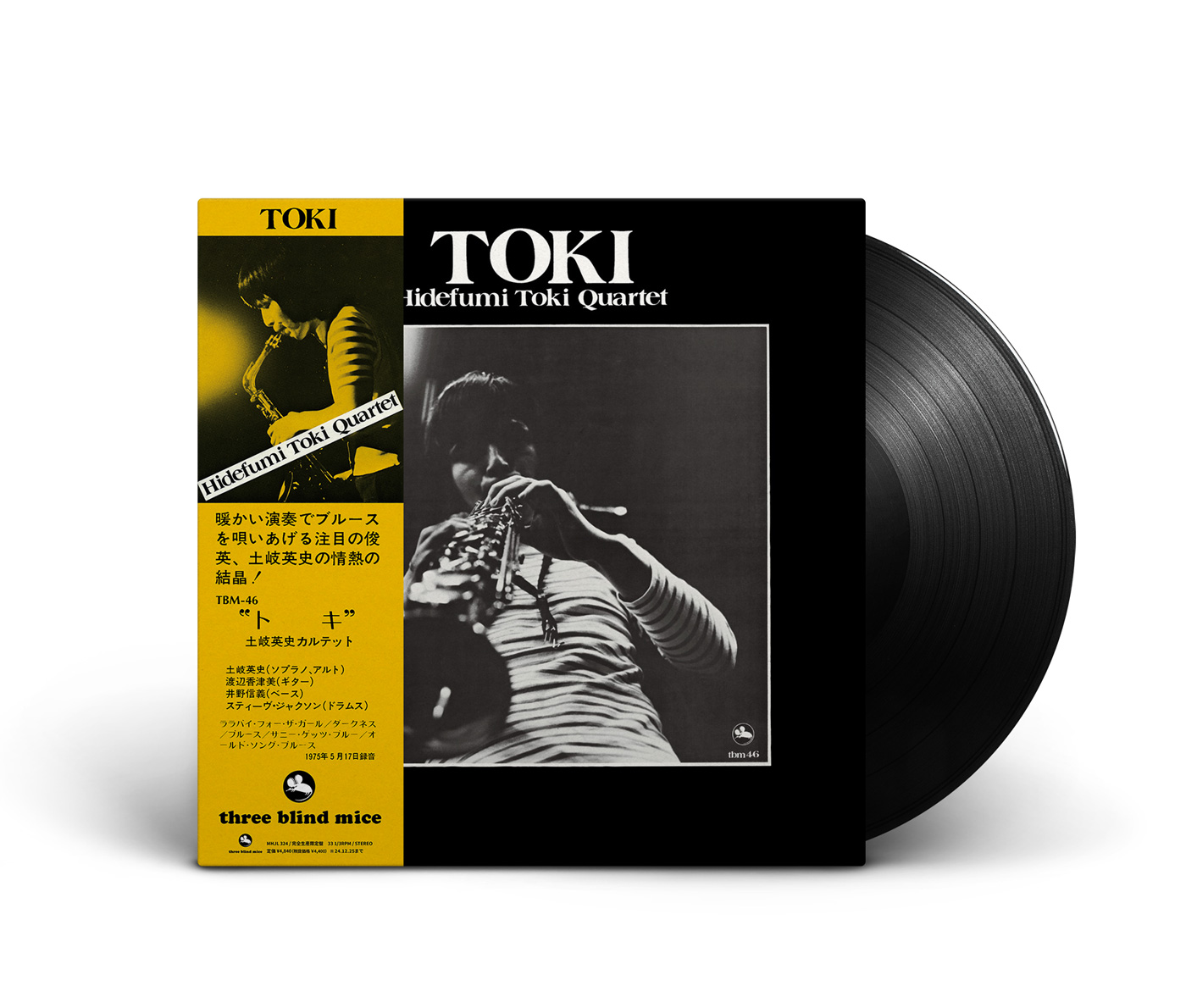
土岐英史/トキ
品番:MHJL 324 [LP 12inch/33rpm]
価格:¥4,840-(税込)
※ 完全生産限定盤
【収録曲】[LP] CD
- [A1] 1. ララバイ・フォー・ザ・ガール
- [A2] 2. ダークネス
- [B1] 3. ブルース
- [B2] 4. サニーが憂鬱になった時
- [B3] 5. オールド・ソング・ブルース
土岐英史(ss, as)/渡辺香津美(g)/井野信義(b)/スティーヴ・ジャクソン(ds)
録音:1975年5月17日
オリジナル発売1975年
Review by OSAMU UCHIDA
‘Isao Suzuki(b) - Kunihiko Sugano(p) - George Ohtsuka(ds)’ – Those
who think of a trio made up of these three members and can declare
immediately that “Hmm, what a great combination. Are they making a LP?
They must be giving an amazing performance” can be said to be fans who
live in a very privileged environment in a sense. Individually, you
should be familiar with the names of these three people. That is
because each of them is currently leading their own group, and they
all have such long careers that it wouldn’t be a stretch to call them
veterans.
It may be a bit late, but for George Ohtsuka, for example, although
there have been changes of members since the trio in his masterpiece
‘Page 1’, he has appointed talented young musicians one after another,
and is steadily producing works worthy of attention while maintaining
content living up to a first-class group. He released an album, in
which he took the lead, entitled ‘GO ON’ on the same Three Blind Mice
record label and it became a hot topic.
Isao Suzuki, the leader of this album, long based at the ‘Five Spot’
in Jiyugaoka, which is run by critic Teruo Isono, while performing
regularly as a group that can be called a house combo, every time Mal
Waldron, a unique and surprisingly popular pianist in Japan, comes to
Japan, he tours all over Japan and they are tight partners, hence, his
name is well known to local fans too.
The remaining piano player, Kunihiko Sugano, may be the least
familiar name among these three. If so, there is no other pianist who
is so underrated, as his ability is truly genuine. Sugano mostly
performs in clubs in Tokyo, and it is true that, unfortunately, his
fans who live in rural areas have rarely had the opportunity to see
him live. He has released two LPs to date, with him as leader: an
excellent work (my favorite LP) entitled ‘Finger Popping (Nippon
Columbia=Tact XMS-10007-CT)’ and ‘Mr. Heartache (ALJS1001-B)’, a
private limited edition co-production with his older brother and the
famous audio critic Okihiko Sugano. They are great works for Sugano’s
fans, but may not necessarily be satisfying for those who know how
great he during actual club performances. That is probably because his
sensitivity as an artist has a negative effect on studio recording
(especially as a leader). In that respect, this ‘Blow Up’ is the
closest to his usual relaxed style, perhaps it was because of the ease
with which he plays on the sidelines, and it would be brilliant if
this could help make his talent widely known.
In any case, the abilities of these three people are such that there
is no need to mention them here, but what I would like to emphasize is
that even though the goals of each group are different, the one thing
they all have in common is that they all have a consistent attitude of
valuing feelings above all else, which can be called the roots of
jazz.
By the way, looking at the current state of these people's
performances, they may give you the impression of a temporarily
organized "dream joint appearance" (in fact, it says so in the
subtitle), but in reality, they have had very close ties in the past
and still now, and it is necessary to clarify here that that is an
important factor in the amazing collaboration - totally spontaneous
too - in this LP.
Going back to 1962, when American jazzmen frequently came to Japan,
some, like clarinetist Tony Scott, even settled in Japan for a while.
While this top clarinet player, who greatly admired Charlie Parker,
stayed in Japan, the pianist he praised the most was Kunihiko Sugano.
Few people today know this fact, but the rhythm section of the group
Scott had formed during that time actually consisted of
‘Sugano-Suzuki-George’.
After all, at that time, there were no
opportunities for recording, and there were almost no public
performances, so it can be described as an “illusory trio”, but there
are people who were lucky enough to hear their performance. No doubt
some lucky people were able to witness this performance. This trio
moved on to form the Hidehiko Matsumoto Quartet, and at one point, it
became the top combo in the Leaders Poll. Therefore, the swingy and
intense performances created by ’Sugano-Suzuki-George’ left an
unforgettable impression on some enthusiasts of the time.
Normally, the following liner notes would introduce the musicians who participated in the recording one by one, but according to Fujii, Isao Suzuki will be detailed by Isono and Kunihiko Sugano will be detailed by Shinichiro Nakayama, individually. So, I will write as I think, focusing on the leader.
It was on the night of June 26, 1963 that I first exchanged words
with Isao Suzuki, also known as ‘Omasuzu’ or ‘Oma-san’, the bassist
with these unusual nicknames. You might wonder why I remember it so
accurately, but of course this day was when the ‘Illusory Ginpari
Session’ (TBM-9) took place. In the second half of the program,
‘Oma-san’, who was carrying a cello, which was still rare at the time,
performed ‘CAT WALK’, which had never been featured much, with the
trio of Masabumi Kikuchi, Hideto Kanai, and Masahiko Togashi in the
background (It is a beautiful piece composed by Mal Waldron and
appeared on the Bethlehem’s masterpiece album ‘Left Alone’. I can
still vividly recall the sight of musicians gathering around him,
listening intently to his performance, rather than the general fans. I
would like you to understand that Isao Suzuki has been seriously
working on this instrument since those days, and the result of his
long efforts has produced the moving masterpiece in this album, so it
is by no means something that happened overnight.
I am sure that Suzuki's cello performance recorded here is as
outstanding as other performances left by many American musicians (for
example, Oscar Pettiford, Ray Brown, Ron Carter, Fred Katz, etc.). I
wonder what you think?
Suzuki's unique characteristic lies in his sticky black rhythm
sense, which he himself said “From the time I started playing jazz, I
performed with black people at US military camps, and at that time I
lived with them and their family, so that feeling may have gotten
ingrained in me" and laughed. It is obvious that this is a rare
quality that impressed Blakey and earned him high praise from Mal.
In any case, I would like you to know that he was very enthusiastic
about this recording, providing three excellent original songs, which
is unusual for such a moody ‘Oma-san’. That is probably what produced
such a wonderful result.
While I was talking about the leader "Oma-san", I am approaching the
end of the assigned number of pages. George Ohtsuka and Takashi
Mizuhashi are already familiar with you from some of TBM's work, and
are well known, so I dare not mention them. However, I want you to pay
particular attention to George's rhythm support, especially in the
trio formation, which is simple but gets the essence, as well as the
precision of Mizuhashi's walking bass.
The only thing I would like to add is that when I had a chat with
Frank Rosolino, a famous trombonist who came to Japan to join Quincy
Jones, one night in Nagoya, he mentioned the session in Tokyo and
repeated a couple of times, “Isao Suzuki at ‘Nero Bianco’ and the Hino
Brothers at ‘Misty’ were both great musicians, but SUGANO on the piano
is an absolutely fantastic player”. I think it's completely ridiculous
that he is ranked only 18th in the reading poll, but considering that
talented players such as Masaru Imada on piano, Sunao Wada on guitar,
Kunji Shigi on trumpet, etc. have become widely recognized all over
the country in the wake of the release of LPs from TBM, it is natural
to predict a huge leap forward for him next year.
‘Omasuzu Theory – Isao Suzuki’s jazz?’ by TERUO ISONO
The musicians at Aoi Studio that day were wearing really stylish
clothes. The main character of the album, bassist and violoncellist
Isao Suzuki, was wearing a brown turtleneck undershirt and a fancy
rainbow-colored shirt.
Kunihiko Sugano, pianist, was dancing down the aisle while listening
to the playback, wearing a classic pink shirt with a neckerchief.
Drummer, George Ohtsuka had his huge body wrapped in a blue shirt,
and on top of that was a bright red vest that looked like a fire
engine.
Takashi Mizuhashi, the fourth man in the group and second bassist
who is in charge of bass when Suzuki switches to violoncello, was
wearing a U.S. Air Force uniform with a military insignia and
something looking like a badge of rank (not a very high one).
The four friends playing music were took to the recording in a
friendly atmosphere, like close brothers.
The excitement and laughter, the production staff including Mr.
Fujii, and I who was involved in this recording session, not just to
write liner notes – when we discovered a common sense of joy in jazz,
this wonderful LP came into the world.
The session leader is Isao Suzuki. The theme of the liner notes
given by the producer is ‘Omasuzu Theory, or Isao Suzuki's jazz’.
I feel like I have become too deeply involved with the bass genius,
this rare talent, to discuss him.
They say love is blind, and it seems like I’m totally head over
heels in love with his jazz. The reason is simple.
There aren't that many bass players in Japan or even in the world
who can play dark blues.
This is borne out by the fact that Art Blakey scouted him and took
him to New York.
Isao Suzuki was born in Tokyo on January 2, 1936, and graduated from
Rikkyo University. Since he started out working with U.S. military
bands, he doesn't have a history of moving from one band to another,
unlike many jazzmen in their 30s.
His first and most brilliant band is the Hidehiko Matsumoto Quartet,
a famous quartet formed as the Watanabe Production's last citadel of
jazz, centered around Matsumoto, who had quit the Hideo Shiraki
Quintet to work as a tenor soloist.
The rhythm section assembled here are the three core members who
created this LP: Sugano, Suzuki, and Ohtsuka. All three were young and
up-and-coming, and each of them possessed a level of ability on their
instruments that was second to none.
This Matsumoto Quartet performed at concerts across the country with
original repertoires such as ‘Vietnam’ and ‘Ringo Oiwake’.
The common hobby of these three was cars. After the group disbanded,
Sugano moved on to a club in Roppongi, Suzuki moved on to ‘5 SPOT’ in
Jiyugaoka, and Ohtsuka went on to play an amazing role in his own
group.
All of them were capable of being leaders.
After Suzuki formed his own group at ‘5 SPOT’, he tried every
possible way to assert himself here, with the exception of living in
New York with Blakey. In addition to bass, there was a wide range of
instruments including cello, organ, piano, vocals, and percussion
instruments.
However, just by playing a single note, such as a shake of the
tambourine, he could evoke black music feeling, which is hard for to
produce. I will remember it forever. ‘5 SPOT’ survived due to
Omasuzu’s jazz music.
I fell in love with his genius jazz feeling and became absorbed in
his music. Meanwhile, countless American jazzmen flocked to admire his
bass playing.
Oscar Peterson, Dizzy Gillespie, Kenny Burrell, just to name a
few.
When ‘5 SPOT’ closed its doors as a jazz venue, the best album of
Isao Suzuki's musical life entered the world. After all, I feel I am
connected to him in some mysterious way.
‘Charm of Kunihiko Sugano’s jazz’ by SHINICHIRO NAKAYAMA
I don't know since when jazzmen have been called musicians, but
today's modern pianists, whether domestic or foreign, are excellent at
composing and arranging music, and they aim for a structured sound as
a band leader. As a result, it is true that as they created a new
sound that is musically progressive and diverse as a group, but on the
other hand, it can also be said that the real thrill of jazz-
improvising on stage- has all but been lost. In particular, Chick
Corea and Weather Report are representative of this kind of group, and
have been acclaimed with the highest praise in Japan.
As a jazz fan, I would like to stick to one thing above all else:
the charm of jazz performance is improvisation. I have come to listen
to jazz in a somewhat reactionary manner, and Kunihiko Sugano's
presence is truly encouraging to me, and his jazz sounds really
fresh.
Both Kunihiko Sugano and Isao Suzuki have steadily created their own
jazz in the depths of the cities that are the epicenter of the birth
of jazz. They are player type jazzmen.
I think the charm of Kunihiko Sugano’s jazz can be summarized in the
following three points.
(1) He has wonderful piano touch. His clean touch creates a great
swing feel.
(2) He has a poetic turn of mind. His skill in creating phrases is
incomparable, so good that you almost hate him.
(3) Consistency and endurance as a jazzman.
His wonderful piano touch may be innate, but it is also the result
of repeated practice that allowed him to fully depict the world of
jazz he was aiming for. Fans listening to his jazz music for the first
time almost always say he sounds like Bill Evans. However, he is a
pianist not influenced by Evans at all. Still, like Evans, it can be
said that he is a pianistic jazz performer who truly takes advantage
of the functions of the piano. In particular, in recent years, his
sound has been refined, and each note is being played beautifully, and
at the same time, the feeling of jazz has become even more intense.
Consistency as a jazzman means how to approach style. His style is
generally traditional, originating from Hampton Hawes, Phineas Newborn
Jr., and Errol Garner, who specialize in modern blues, but also both
Sugano and Suzuki single-mindedly pursued their own style, leading to
their independence as lone wolf jazzmen. In today's diversified and
expanded musical landscape, I am now even more attracted to jazz,
which is rooted in tradition but has a more contemporary feel. I think
you can understand this better if you think about Sonny Stitt or Ray
Bryant. As a Sugano fan, I was once told the following.
“You like ‘Iki’(could be translated here as stylish) jazz, in
essence.”
I've never thought of myself as a stylish person, and I'm not up on
what ‘Iki’ is or Edo period culture and Rakugo. Perhaps that is why
I’m looking for something ‘Iki’.
Sugano jazz can also be described with words such as ‘refined’,
‘forceful swing feel’, and ‘sexy phrase’. In Shuzo Kuki's ‘The
Structure of ‘Iki’, which I read a long time ago and could not
understand at all, there was this phrase:
“Iki ignores a careless positing of reality. It boldly brackets
everyday life, and engages in autonomous play in a manner
disinterested and purposeless, as it breathes a neutral air,
transcending all of life around.”
That's a good phrase. It seems to capture the essence of Sugano
jazz.
The two songs included in this album, ‘Everything Happens to Me’ and
‘Like It Is’ are great sessions fully capturing the charm of Kunihiko
Sugano's piano jazz. I think this is Isao Suzuki's first album as a
leader, and this record will appeal to many fans as a unique album for
making the world realize that there are players who represent the
other side of Japanese jazz.
Translated by YUKO M. DARWEN
‘Dear Mari Nakamoto’ by TAKEO FUJII
“What is jazz vocals?'' is as difficult a question as “What is jazz?'' Even if giving a sufficient answer is impossible, I would like to point out the following two as essential requirements. The first is that ‘Voice must be a single instrument'. This means that as a powerful musical instrument, voice must have a swing feel and be able to play jazz with a lot of improvisation as with other instruments. However, at the same time, the second requirement is that ‘There must be a warm heart-to-heart exchange with the listener’. Unlike other musical instruments, there is no inorganic instrument between the singer and the listener, so a direct, sharp yet warm heart-to-heart interaction between people – strongly since it’s jazz – is required. I believe that these two things, freely using one’s own voice like an instrument and richly conveying one's heart to the listener, are the basic requirements for jazz vocals.
By the way, if we look at the current state of jazz vocals in Japan,
the level of instrumental performance has improved significantly in
recent years, and the number of people who are reaching world-class
standards is gradually increasing. In comparison, its backwardness
cannot be denied. If we consider the cause of this in relation to the
essential requirements for jazz vocals that I mentioned, for the first
requirement, a sense of rhythm in the voice, which is the most
important when using the voice as an instrument, is a must. For the
second requirement, there is a fundamental obstacle in terms of
‘words’ when conveying the singer's heart to the listener. Regarding
the first point, I don’t think there’s any need to explain it, as I
can of course think of super-class artists such as Ella Fitzgerald and
Sarah Vaughan, as well as recent young artists such as D.D.
Bridgewater and Marina Shaw.
It is no surprise that most of the best jazz songs are in English,
given their origins, so the second point means that in our country,
where English is not the native language for both the singer and the
listener, the heart of the song cannot be fully conveyed. If that is
the case, to put it dramatically, it would mean that as long as
Japanese jazz vocalists pursue the American style, it won’t be
possible for them to establish a songs’ true meaning. In other words,
if we aspire to American jazz vocals up-front, we will never be able
to compete.
When you think about it this way, it even seems that the possibility
of the establishment of jazz vocals in Japan is already in a place
that cannot even be called jazz vocals in the traditional sense. This
may lead to the recognition that the path of the ‘Japanese’ jazz
vocals, which have regional characteristics, needs to be strongly
explored.
There are about three directions I'm currently considering. The
first is the active introduction of Japanese elements. For example,
would they be something like ‘Iki (swankiness)’ or ‘Ma (pause)’? So
far, I think Koji Moriyama is a male performer, and Yoshiko Goto is a
female singer, who have wonderfully incorporated those elements into
their vocals, whether consciously or unconsciously. There are not that
many male jazz vocalists, but among them, Koji Moriyama is an
outstanding vocalist with dandy clothes, who delivers fully modern,
and yet swanky jazz vocals that touch the hearts of Japanese people,
in a warm atmosphere. You once told me passionately that you would
make performing with him a reality one day. I have a feeling that day
will be very lovely. I’m also impressed by Yocchin (Yoshiko Goto)
because she sometimes takes very good ‘pauses’. For example, in some
of the songs in TBM's ‘Day Dream’, the ‘pauses’ vividly shows the
contrast between sound and silence only Japanese people can sense as
well as black and white.
Now, the second path that Japanese jazz vocals should explore is the
Japanization of jazz vocals. Then, I think the third path is to go
beyond the existing jazz genres, step into new areas and fuse them
together.
I believe that one of those who are most actively trying to overcome
the weaknesses of Japanese jazz vocals through these second and third
paths is none other than you.
First of all, regarding the Japanization of jazz vocals, you already
took on a challenge with the release of an LP called ‘Egaitegoran
Uminoirode’ last July. You have two Japanese language original songs,
including the album title track, and the rest are English jazz songs
you sing in Japanese, such as “When you smile". However, this
Japanization was a bit unusual, as rather than translating the
original lyrics, Japanese lyrics were added to match the image of the
original songs.
Since you have made such an attempt, you are probably already
familiar with the difficulty of translating jazz vocals into Japanese,
but I think it is doubly fraught with difficulties. Firstly, there is
the difficulty of the English nature of jazz. It means difficulties in
transferring to Japanese, but on top of this, comes the musical
difficulties inherent in the Japanese language itself. It has long
been said that there is a close relationship between language and
music, and they say that the origin of ethnic music lies in the spoken
language that the ethnic group uses on a daily basis. In that sense,
since jazz is based on English, which is the everyday language of
Americans, there is a high risk that just by translating it into
Japanese, jazz will no longer be jazz. Furthermore, in addition to
that, it is well known that the vowel structure, a characteristic of
the Japanese language, has major deficiencies in terms of rhythm,
which makes the problem even bigger. However, despite these
difficulties and the magnitude of the negative aspects, I still fully
recognize the usefulness of this challenge. That is because, as long
as Japanese people have Japanese as their native language, I think
that the only way to convey the singer's heart as deeply as possible
to as many people as possible is to use Japanese, and in that sense, I
believe that the challenge to Japanize is one of the most fundamental
means, or even a shortcut, to create a unique Japan jazz vocal. To be
honest, the world songs written and composed by Japanese people on the
above-referenced LP, were much better than the ones in which the
original English lyrics were replaced with Japanese words, but still,
I think it turned out pretty well considering it was her first
attempt.
Next, let's move on to the third path, exploring the path of
Japanese jazz vocals beyond genres. Recently, people such as Kemeko
(Kimiko Kasai) have said that they would carry on singing without
limiting themselves to particular areas such as jazz. On the other
hand, there is also a growing movement among soul and pop artists,
such as Yuka Kamebuchi, Hatsumi Shibata, and Ryoko Moriyama, to try
their hand at jazz, and exchanges transcending genre boundaries are
gradually becoming more popular. You are one of the jazz vocalists who
are most actively involved in these trends and are trying to find a
new path for Japanese jazz vocals.
By the way, to go a little off topic, I actually have great faith in
Mari Nakamoto's potential as a popular singer. I think one of the
great charms of your vocals is the pitch lowering by a half tone.
Masao Ogawa also pointed out this point from a jazz vocalist's
perspective in his commentary on ‘Little Girl Blue’, and I focus on
that half tone lowering as an element of songs that Japanese people
like the most. That is to say, I think that half tone lowering
flatness has something in common with Sachiko Nishida, who is famous
for ”When the Acacia Rain Stops”, and Ayumi Ishida, who is famous for
“Blue Light Yokohama”. I think that half tone lowering is an important
requirement for a Japanese popular song to become a hit, but at the
same time it's not something that can be achieved with skills. For
this reason, you might laugh at me for being too naïve, but I think
there is a good chance that Mari-chan will become a huge hit in the
popular music field, as long as she is blessed with good songs.
Well, I got sidetracked at the end, but so far I have looked at the path Japan's jazz vocals should explore in the future, along with your achievements. However, in fact, we are missing something important. It may seem paradoxical, but in the process of finding a new path, it is extremely important to relentlessly pursue authentic jazz vocals at the same time as exploring new directions as described. It goes without saying that Terumasa Hino deeply pursued Miles, or Sadao Watanabe developed his own style by thoroughly studying each and every phrase of Charlie Parker, in terms of vocals as well, there are many great vocals full of rhythm and emotion in the U.S. These are indispensable study materials and there is no doubt that a deep pursuit of them will lead to the establishment of Japanese jazz vocals.
While thinking about these things, I started listening to the new
album ‘Mari Nakamoto III’, and as I listened, I felt a sense of relief
and started feeling calm. I think that is because, first of all, I
realized that you are working with your feet firmly planted in the
foundation of jazz.
In addition, it makes me happy to see your tastes and ideas. First,
there is the backing duo of Isao Suzuki's bass and Kazumi Watanabe's
guitar. From what I heard, that is the combination you've been
requesting since the beginning of last year. Both of them are players
that our country can be proud of on the world stage, and are a kind of
dream collaboration. A little before this album, Yocchin released an
album on TBM backed by the same bass and guitar combination of
Kunimitsu Inaba and Sadanori Nakamure, but this is a record with a
very different feel. One of the biggest reasons for this is that in
Yocchin's album, she sings love ballads in her well-established
distinctive style both in a good way and a bad way, whereas your album
is based on light 8-beats and blues, with a very fresh and modern
feel. You could say that this direction is an extension of ‘Sneakin'
Up on You’ from ‘Unforgettable’. In a review of that record, Yozo
Iwanami wrote “The groovy feeling in the blues and 8-beat numbers is
unique to her, and I hope she cherishes it.”, and indeed, you could
say that this album indicates your steady progress along expected
lines. However, at the same time, I felt particularly happy because it
shows that your proactive efforts to explore new Japanese jazz vocals
are firmly rooted in authentic jazz vocals.
Now, I would like to write down my impressions of each song below.
However, the letter has already become too long. Therefore, I can only
report that I just tried to pay close attention to the various
innovations (for example, a duo with just Kazumi's guitar) and small
details (for example, music creation that feels like an interplay
between vocals, bass, and guitar) that you have added to each song,
and listen to them carefully, and that effort brought me a very
pleasant reward. I would also like to ask many people who will listen
to this album to pay close attention to these details when viewing it.
I would also like to ask many people who will listen to this album to
enjoy listening with this type of careful attention to detail.
The new year’s day in 1976
Translated by YUKO M. DARWEN
1. HIDEFUMI TOKI, standard-bearer of the post-war generation
He was born in Kobe on May 1, 1951.
‘1945’ is an unforgettable year for Japan's current prosperity. In
other words, the Korean War began the month after he was born, and it
is a well-known fact that served as ‘an unexpected piece of good luck’
for the recovery of the Japanese economy, which had lost everything in
World War II, and turned out to be the trigger for the astonishing
high economic growth that followed. Born in this year, he did not
experience even the slightest bit of Japan's most difficult period,
the post-war famine period from 1945 to 1949, and was a typical
example of the ‘post-war generation’ who grew up in line with Japan's
rapid economic growth. This has great significance when considering
his music. Let's talk about that for a while.
He grew up in a musically blessed family. In particular, the
presence of his older brother Yuichiro, who is currently active as a
chanson pianist and arranger, was significant. It greatly benefited
him both in learning instruments and listening to records, and it can
be said that it formed an important foundation for developing his
innate musical talent.
He had already been playing the saxophone and clarinet in a brass
band since junior high school, but his musical history began in 1966
when he enrolled in the clarinet department at the Osaka College of
Music High School. It can be said that he started to get familiar with
the world of jazz after learning piano with Chieko Otsuka (ex-Akira
Miyazawa Combo) and saxophone with Jiro Akamatsu. During his high
school years, he had already played in the university's band and even
came to Tokyo to perform at jazz clubs. However, in his musical world
at this time, classical music and jazz were still coexisting in
parallel, and this situation continued for a while even after he
entered university. That is, he joined the saxophone department of the
Osaka Music University in 1969, and while studying under Arata
Sakaguchi, a famous classical saxophone player, he had several
opportunities to perform with Sadao Watanabe, a master of jazz
saxophone. However, in October 1970, he decided to quit studying music
at university after one and a half years at the university. At this
moment, two things were decided in his musical history: firstly, to
pursue jazz, and secondly, to become a professional who makes a living
through music.
His first professional job was performing with Isao Suzuki Group at
jazz club ‘5 Spot’ in Juyugaoka. Subsequently, in February 1971, he
joined New Hard and performed as an alto soloist. In April 1971, he
formed his first combo with Takao Naoi (guitar), Mikio Masuda (piano),
Tamio Kawabata (bass), and Shoji Nakayama (drums). However, this combo
was heavily influenced by Naoi, who had just returned from the U.S.,
so it was hard to say that it is Toki’s combo in the true sense. Also,
members were busy with other combos, and all five members were not
active together. This first Toki band was disbanded in November 1972
when he joined Terumasa Hino 5. By the way, he also participated in
Hino's session before Hino's trip to the U.S., and says that he
learned a lot from Hino in his unique and great performance of slow
songs.
In 1973, he formed the second Toki combo with trombone player
Hiroshi Fukumura. But, because he, himself was busy with many combos
such as Ryo Kawasaki 5 (1973/4~), Fumio Itabashi 4 (1973/5~), and Yuji
Imamura 5 (1973/10~), and also there were many changes of members, his
musical concept did not seem to be fully utilized.
However, after this period of exploration, the third Toki band - the
Hidefumi Toki Quartet, was formed. In October, just four months after
the combo was formed, the group was given the 1st ‘Shinjuku Jazz
Festival’ Award, which is given to an up-and-coming jazz group that
will lead the future from among young jazzmen, and aims to encourage
their future prospects. This award was a big plus for the Toki
Quartet's subsequent success, in a modern climate in which formality
is becoming more and more important such as people won’t trust you
unless literally you show them something and surprise them. On the
other hand, from September, Shigeharu Mukai, Yoshio Otomo, Kenji
Yoshida, and himself played a central role in gathering young jazzmen
in search for something different from conventional jazz, and forming
the rehearsal band SMC (Super Music Composers). He also began an
attempt to go beyond his own combo and delve deeper into the world of
his ‘dig’.
Looking at it this way, since he became a professional jazzman, he learned a lot from being part of excellent combos of top and mid-level players such as Suzuki and Hino in the Japanese jazz world, and formed his own combo within a year of becoming a professional. It can be said that his career has been smooth sailing, with his 3rd quartet receiving an award at a major festival soon after its formation.
In the case of Hidetoshi Toki, there is no doubt that his privileged family and musical environment have greatly contributed to his current music. For example, if you think about what his classical music background has brought to him, firstly, he has the ability to compose and arrange, which has recently become an essential requirement as a leader of a jazz combo, and secondly, he has mastered the wonderful saxophone tone as you can immediately tell when listening to this album. The former goes without saying, but as for the latter, I believe that studying under Arata Sakaguchi greatly influenced his ability.
Jazz has a strict characteristic of never allowing a musician to just show his ‘public self’ and forcing him to show his ‘real self. And when I listen to all the tunes on his first album as a leader, I can feel the post-war generation in really good shape (so good I am envious) in his horn’s tone, phrases and overall performance – against the background of this rich process of coming to Japan, he grew up in an equally musically blessed environment, and furthermore, he was able to choose his own way of life earlier than others, which gave him another opportunity to grow.
Indeed, there is no alto saxophonist who did not start from Parker. There is no Japanese alto saxophonist who has not been influenced by Sadao Watanabe. Toki is no exception. However, his alto is not that of Parker, which could be called the cry of a painful life, nor that of Sadao Watanabe, who has endured the hardships of going through the darkness of Japan and leading Japanese jazz. What is there is an alto, which is on the different level from those others, youthful, but without getting nervous, and expresses ‘real self’ of one unusual musician of the post-war generation freely and naturally. In other words, his alto can be said to reveal a major characteristics of the post-war generation, i.e. the world of ‘easy going’ in a good sense. That is a world with a certain kind of gentleness as an attitude of ‘Live and let live’, based on an unrestricted and free spirit. Conversely, it is precisely because of his alto style that influential jazzmen such as Terumasa Hino are attracted to, this album may be the fruit of a five-year love affair between them.
When I met him the other day, he said this himself. “I don't like being told that I sound like someone else. I don't care if the tune is someone else’s, but I want to bring out my own uniqueness in the performance. I don't want to overextend myself just because of that, I want to progress step by step within my own abilities. I will avoid getting too close to other members, but I want everyone to have fun together. The current members are the best for that.” As I looked at the face of this gentle and personable young leader, yet with full of confidence as he steadily moved forward on his own path, I couldn’t help but have high hopes that if he continued to grow as he had, he would bring something completely different to Japanese jazz as the standard-bearer of the post-war generation in the jazz world.
2. About this album
This album is Hidefumi Toki's first album as a leader. Among the three young alto artists who are currently attracting attention: him, Kenji Mori and Yoshio Otomo, he was the last to release a record where you can listen to alto saxophone performance in detail. However, although it was the last, it can be said that this is the most full-fledged self-album.
Producer Takeshi Fujii has been paying attention to Toki since he
performed at ‘5 Spot’ just after he became professional. At that time,
like Toki, TBM was probably just toddling. Five years have passed
since then. TBM has grown into a jazz label that possesses solid
ability, while Toki has also gained publicity as a budding altoist,
and has also grown into a leader of a wonderful young jazz combo. It
can be said that this has enabled him to walk on a steady path as a
jazzman.
It seems that producer Fujii's love for his performance was fully
rewarded, and the performance of the Hidetoshi Toki Quartet on May
17th, the recording day, was in perfect condition. Its smooth
performance can be guessed from the fact that it set a new record for
the shortest recording time in TBM's record recording history. As a
result, all but the 1st song on this album was recorded in one take.
Lastly, let's briefly go through the tunes. The first tune on side A
is Toki's original, "Lullaby For the Girl". Toki plays the soprano
saxophone, and you can hear Coltrane's influence in it, but as
mentioned above, the beauty of its sound and the naturalness of his
phrase development belong to his own unique world. In addition, when
you listen to the first song, you will immediately notice how great
Steve Jackson’s drums are. Especially when he played in the
background, he was fully committed to his role, had a precise rhythm,
and had a sharp and crisp cymbal sound. This is consistent throughout
this album, to the point where you feel that this quartet owes a large
part of its excellence to him. Steve Jackson is not yet well known in
Japan, so I'll give you a brief biography: He's 27 years old from New
York and has had sessions with Steve Grossman, Dave Liebman, and
others over there. He is a nice, Japan-loving guy who came to Japan in
1972, and while teaching English, he continued to train hard as a
drummer with top-notch combos such as Terumasa Hino 5, Takehiro Honda
3, and Sadao Watanabe 4.
The second tune “Darkness” is also Toki’s original. Toki switches to
the alto saxophone to play a powerful yet beautiful ballad reminiscent
of Coltrane's wonderful record ‘Ballads’.
The first and second tunes on side B are what can be called standard
numbers. However, all of them were arranged in his own way, and
especially the second tune, since he had always had a musical idea, he
skillfully broke down the simple original melody and created his own
beautiful world of alto solos.
The third tune, "Old Song Blues", is again Toki's original. Here, I
would like to focus on Kazumi Watanabe's guitar and Nobuyoshi Ino's
bass, which have been getting better with this album. In the former,
you can clearly feel his unique flat, delicate vibe and fingertip
movements with a sense of speed, and in the latter, he forms a
wonderful rhythm section, especially in excellent combination with the
drums.
Translated by YUKO M. DARWEN
第I期・第1回/2024年2月28日発売
▲▲▲ CLICK ▲▲▲
TBMレーベル屈指の人気作品として語り継がれる、山本剛の第2弾。
抒情性、力強いスウィング感など、様々なジャズの楽しさがギュッと詰まった邦人ピアノトリオの決定盤!!
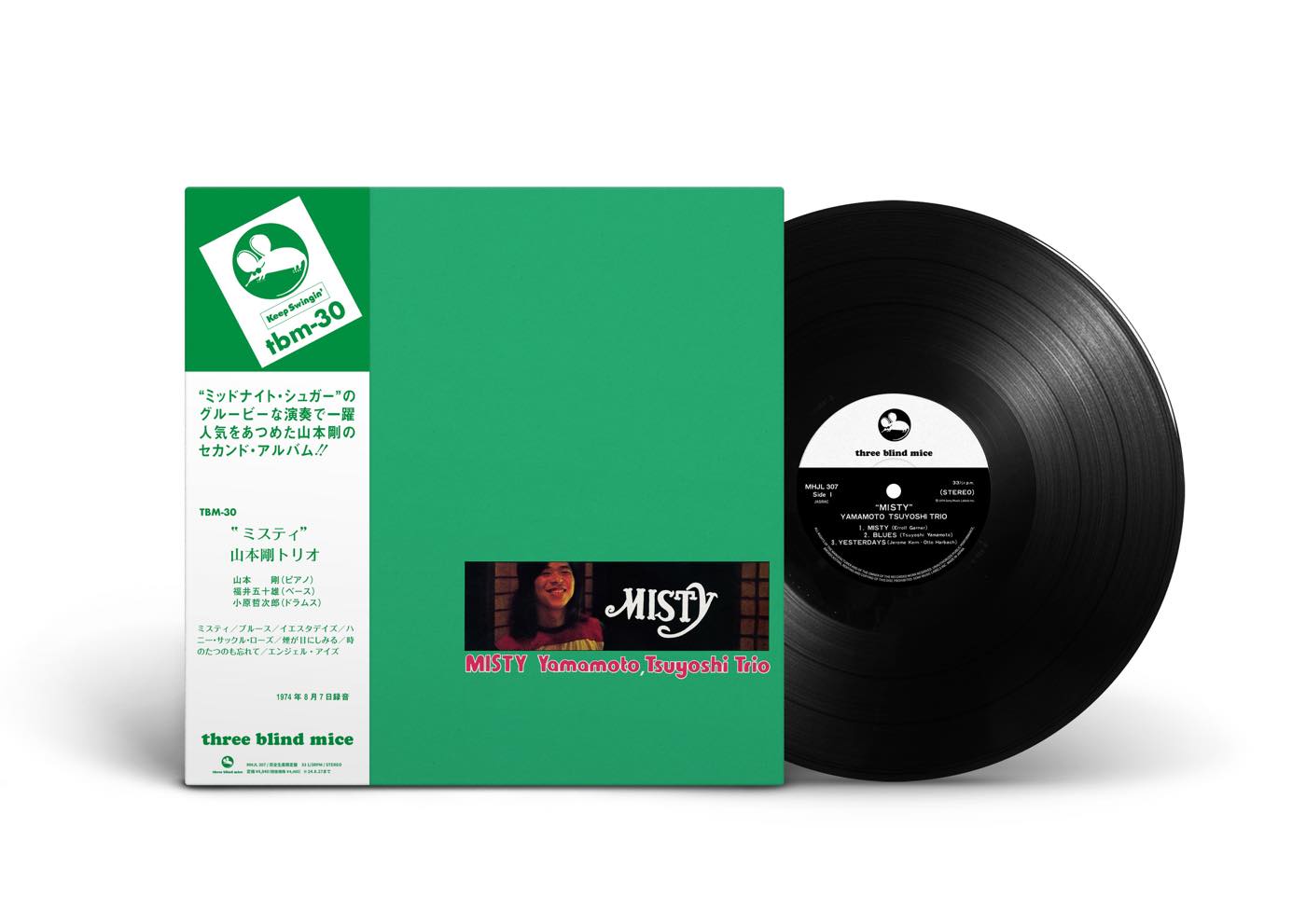
山本 剛トリオ/ミスティ
品番:MHJL 307 [LP 12inch/33rpm]
価格:¥4,840-(税込)
※ 完全生産限定盤
【収録曲】[LP] CD
- [A1] 1. ミスティ
- [A2] 2. ブルース
- [A3] 3. イエスタデイズ
- [B1] 4. ハニー・サックル・ローズ
- [B2] 5. 煙が目にしみる
- [B3] 6. 時のたつのも忘れて
- [B4] 7. エンジェル・アイズ
【演奏】 山本剛(p) 福井五十雄(b) 小原哲次郎(ds)
録音:1974年8月7日
オリジナル発売:1974年
北の地、根室に繰り広げられた熱いコンサート、日野元彦の素晴らしい世界を収録!「ファースト・アルバム」(タクト)とともに愛され続けている、北の大地、根室にて繰り広げられた熱気溢れるライヴ録音盤。タイトル曲は文字通り海原でぶつかり合う流氷の如く壮大だ。

日野元彦カルテット+1/流氷
品番:MHJL 308 [LP 12inch/33rpm]
価格:¥4,840-(税込)
※ 完全生産限定盤
【収録曲】[LP] CD
- [A1] 1. 流氷
- [A2] 2. ソウルトレイン
- [―] 3. リオ・ローマ *
- [―] 4. ミルキー・シェード *
- [B1] 5. ニュー・ムーン
* = CD『流氷+2』のみのボーナス・トラック
【演奏】 日野元彦(ds) 山口真文(ts) 清水靖晃(ts, ss) 渡辺香津美(g) 井野信義(b)
録音:1976年2月7日
オリジナル発売:1976年(LP) / 1988年(CD)
張り裂けそうな緊迫感が全編に漂う、サックス奏者・峰厚介の戦慄のデビュー・アルバムにして、名門three blind miceレーベルの歴史的幕開けとなった、記念碑的作品。
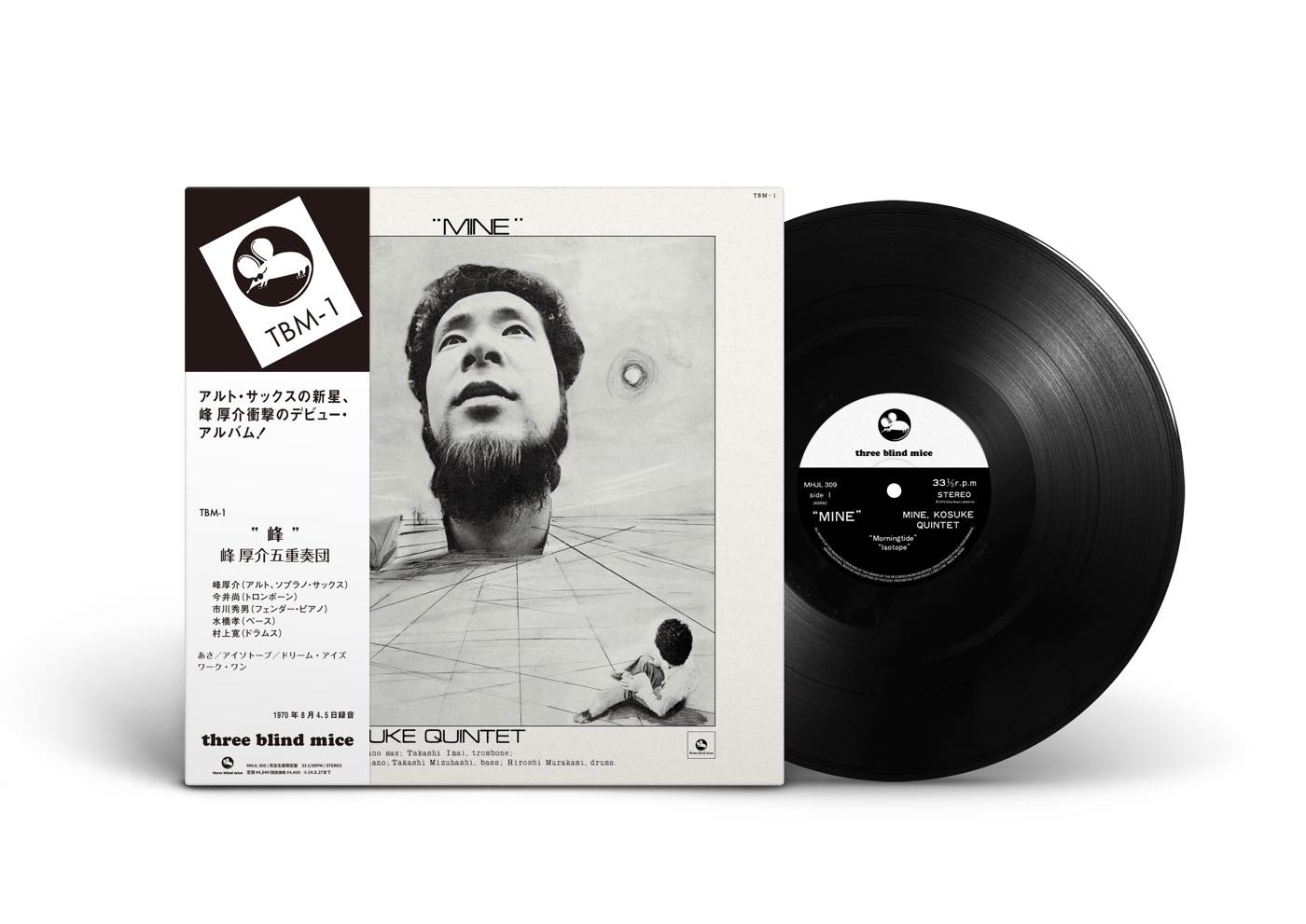
峰 厚介五重奏団/峰
品番:MHJL 309 [LP 12inch/33rpm]
価格:¥4,840-(税込)
※ 完全生産限定盤
【収録曲】[LP] CD
- [A1] 1. あさ
- [A2] 2. アイソトープ
- [B1] 3. ドリーム・アイズ
- [B2] 4. ワーク・ワン
【演奏】 峰厚介(as, ss) 市川秀男(Fender Piano) 水橋孝(b) 村上寛(ds)
録音:1970年8月4、5日
オリジナル発売1970年
Review by Hideki Sato
The name of pianist Tsuyoshi Yamamoto is said to have left an unforgettable impression on the ears of his fans with his debut album ‘Midnight Sugar’, but among the many pianists who have appeared so far, his debut performance was memorable and somehow touching from the beginning. What struck me especially when I listened to his piano was the emotion in his singing, and what's more, his expression itself is pleasantly sensitive. Furthermore, he doesn't seem overly technical or serious, and has excellent taste in songs.
This is the second album by the Tsuyoshi Yamamoto Trio to be released on the Three Blind Mice label, following ‘Midnight Sugar’ (TBM-23), and its members comprise Tsuyoshi Yamamoto (piano), Isoo Fukui (bass) and Tetsujiro Obara (drums).
The emergence of a pianist like Tsuyoshi Yamamoto, who has a great singing spirit and wonderful atmosphere, can be seen as proof that the number of adult fans or rather, fans who truly enjoy jazz is increasing. It is often said that Japanese jazz fans tend to be too serious when listening to the music, and are quick to use artistic quality as a criterion for evaluating works. There is even a tendency in some people to think that enjoying jazz itself is somehow unscrupulous. At the same time, if you only listen to jazz in concert venues, you might end up being forced to appreciate it one-way. Accordingly, it is thought that the ideal way to listen to this kind of piano trio is with glass in hand in small clubs.
In the case of Tsuyoshi Yamamoto, he is currently performing in a regular house trio at Roppongi club ‘Misty’, and since he has been performing with the same members for a long time, he has a knack for tasteful song selection, and a fine sense of fusion and balance between the entire trio. His piano has all the swingy quality, relaxed spirit, sleekness and outstanding melodious singing that can be felt in the play of his seniors, Yuzuru Sera, Masaru Imada, and Kunihiko Sugano. However, in some respects, Tsuyoshi Yamamoto's performance, which exudes an atmospheric charm using the piano even more so than his seniors, is extremely enjoyable, especially in the field of jazz, which has until now been poorly covered.
Let me introduce Tsuyoshi Yamamoto's career here. He was born on March 23, 1948 in Niigata Prefecture. He started playing the piano when he was in 6th grade of elementary school, but soon stopped, and when he was at junior high school, he played the trumpet in a brass band. He was drawn to jazz after listening to Art Blakey's ‘Dangerous Liaison Blues’ when he was in his third year of high school, and he began to teach himself to play the piano again. After that, he entered Nihon University's College of Political Science and Economics, and while there, he joined Mickey Curtis and The Samurai as a member, and began his career as a professional musician, traveling to Europe with the group. It was after leaving Mickey's group that he began to devote himself to playing jazz, and since then he has performed mainly in clubs, forming “Guess My Fines” and his own trio in 1973, and since 1974, he has been using the said ‘Misty’ as a place for his daily activities.
However, I didn’t learn all about this background from him, who is rather quiet, but according to what I heard, his idol when he was practicing the piano was Bobby Timmons, as well as other pianists such as Wynton Kelly and Red Garland. In particular, his melodic quality and sense of phrasing seem to be influenced by artists such as Kelly, and his handling of block chords in ballads feels similar to Garland. Currently, he seems happiest playing in the trio, and says that playing in a club in front of the fans is the most thrilling. It is a well-known fact that his trio also shows great charm in singing accompaniment, as they have been involved in Minami Yasuda’s recordings. Furthermore, his performances that you hear in these types of clubs are a little different from his records, showing a fairly earthy side, and giving strong key touch, but I think at least, this album best captures his atmospheric quality. When I asked him about it, he said that he has recently become interested in the piano music of artists such as Randy Weston, and that he used to listen to Monk's solos a lot.
Bassist Isoo Fukui and drummer Tetsujiro Obara are both members of the Masaru Imada Trio. Fukui was born in Hakata, Kyushu on October 1947, and moved to Tokyo around 1968. He performed in groups such as Sadayasu Fujii’s and Yasuro Osawa’s, and joined the Masaru Imada Trio in the spring of 1972. Tetsujiro Obara is the oldest of the three and was born on March 23, 1941 in Futaba District, Fukushima Prefecture. He enrolled in the Faculty of Letters at Chuo University, and played an active role in the brass band while there. In 1965, he joined the Hisahide Kato Sextet and became a professional. After working in the Hiroyuki Uyama Trio, Junko Kimura Trio, Kunihiko Sugano Trio and Kosuke Mine Quintet, he performed as a member of Five Spot house trio, and also joined other groups such as Takeshi Kamachi, Hiroshi Suzuki, and Yuji Ohno. He also performs at jazz cafes with his own trio. His favorite drummer is Elvin Jones, and ever since he joined the Masaru Imada Trio, his drumming has continued to show solid quality.
As with ‘Midnight sugar’ the charm of this album ’Misty’ is, first and foremost, a collection of masterpieces of standards, and as you can hear, it is a wonderful performance by a trio who specializes in singing. This kind of tasteful album creation can't be called ambitious, but it was only possible because of Takeshi Fujii, a producer who knows the spirit of play in a positive sense and the heart of jazz. As mentioned earlier, the piano trio's splendid performance unfolds in a superb atmosphere, completely captivating the hearts of the listeners. Lastly, let me introduce the pieces.
Side A
1. Misty
It goes without saying that this is Erroll Garner's masterpiece, and also the title of this album. Many of Garner's pieces are full of elegance and classy eroticism, this song one in which he shows off his exclusive feature to the fullest. There was even a movie starring Clint Eastwood based on this piece. The trio's performance, which begins with an unaccompanied piano solo, skillfully draws on the mood of the original piece, and Yamamoto's piano has a beautiful touch that seems to be cuddling up.
2. Blues
Yamamoto's original work. It is a number that shows his emotional blues spirit. The trio's performance, which unfolds in a particularly relaxed atmosphere, has a pleasant flavor, and continues to have a pleasant bounce until the end. Following Yamamoto's solo, Fukui's one-verse and chorus walking bass solo comes in, followed by four verses of piano and drums, and the piece finishes by returning to the theme.
3. Yesterdays
This piece was composed by Jerome Kern for the 1933 musical Roberta. It is also famous as a jazz standard, and there are many great performances of the tune. The performance here begins with the theme with its memorable bass solo, and if you're a jazz fan, you'll definitely be reminded of Paul Chambers' solo on ‘Bass on Top’. The trio’s performance includes a section that focuses on Yamamoto's piano, but overall this is a number with Fukui's bass to the fore.
Side B
1. Honeysuckle Rose
This tune was composed by Fats Waller as the theme song for the musical ‘Load of Coal’. Yamamoto's rhythmical piano waltzes through the phrases, and Obara's drums and Fukui's bass solo are also in a cheerful mood.
2. Smoke Gets In Your Eyes
Just like A-3, Jerome Kern's masterpiece, was inserted into ’Roberta’. Yamamoto's piano shows a variety of expressions while creating an interesting stride-like performance. His unique taste shines through in his pianistic play.
3. I Didn't Know What Time It Was
A piece by Richard Rodgers, this is also famous as a jazz standard. The trio's performance exudes flavor as ever.
4. Angel Eyes
Matt Dennis’ masterpiece. This is a track performed by Yamamoto on solo piano, and is a perfect song choice to round off the album. Yamamoto's piano portrays the sophisticated mood of this ballad with an even more beautiful touch.
The contents of the liner notes have been excerpted and translated from those at the time of the original release.
Translated by YUKO M. DARWEN
Review by Takeo Fujii
About Motohiko Hino Quartet
It can be said that Motohiko Hino stood on his own feet as a leader sometime after his elder brother, Terumasa, moved to the United States.
Since then, there have been a period during which he formed a combo with Mikio Masuda (p) and Tsutomu Okada (b) of the Terumasa Hino Quintet under the name ‘Toko Trio’, but it cannot be said that he was fully independent.
The current Motohiko Hino Quartet was achieved through the following steps.
① Motohiko Hino Quartet with Isao Suzuki
In June 1975, after Terumasa went to the U.S., Toko lost the focus of his performance activities and was said to have been absent-minded. Eventually, he started playing with Isao Suzuki (b), became interested in 8-beat, and with Suzuki he formed the 1st Motohiko Hino Quartet, centered on the 8-beat sounds of electric instruments. This Toko quartet, consisting of Mikio Masuda on keyboard, Katsumi Watanabe on guitar, and Isao Suzuki on bass, quickly gained acclaim. In particular, at the ‘Nemu Jazz Inn’ in July, despite the unfavorable performance time of 3 o'clock in the morning, they gave a stunning performance that blew away the sleepiness of the nearly 5,000 audience. This performance is featured on the live recording ‘TOKO’ (Bellwood-King).
However, after a short period of time, Masuda suffered from a hand issue and left, the group continued for a while, with tenor Kosuke Mine joining in inbetween his own quartet performances. This line-up of the Toko Quartet performed at the Summer Jazz Festival late August.
Toko later stated that the few months he spent in the quartet with Isao Suzuki was an invaluable experience. Experience that he still draws from today.
② Motohiko Hino Quartet with Steve Grossman
Eventually, Mine, who had been participating on a temporary basis left, and Hiroshi Matsumoto from the Genji Sawai Quartet joined as the exclusive pianist. Sadly, this line-up of Toko, Isao, Katsumi, and Matsumoto was short-lived. It could be said that this was due to the arrival of Kochi, a group led by Terumasa Hino and Masabumi Kikuchi, in October.
‘Kochi’ prompted a major change in Toko
The performance of ‘Kochi’ itself lacked cohesion and could hardly be called good, but there was definitely something that made Toko think, “This is jazz”. At this point, he returned from the 8-beat world to the 4-beat world, and after Kochi disbanded, he parted ways with Isao Suzuki and formed the 2nd Motohiko Hino Quartet with Steve Grossman, who was a member of Kochi (Other members include Katsumi Watanabe on guitar, Tsutomu Okada, Yoshio Ikeda, and Nobuyoshi Ino take turns on bass).
Although this quartet was a temporary one until Grossman returned to the U.S., it was significant in a sense that it serves as the prototype for the current quartet in terms of instrumentation and repertoire.
③ Current Motohiko Hino Quartet
After Grossman had gone at the end of November, he welcomed Nobuyoshi Ino, who belonged to the group of Hidefumi Toki and Masayuki Takayanagi and had been participating on a temporary basis, as an exclusive member, and also hired Yasuaki Shimizu (ts, ss), a mere 20 year-old, highly promising newcomer who had been in the Yoshio Ikeda Quartet, leading to the 3rd Motohiko Nino Quartet.
Although you could say that this group's activities have only started in full swing this year, it has already become so enriched that you can say it is currently the best combo in Japan. This is because these 3 young members, Ino born in 1950, Katsumi born in 1953, and Shimizu born in 1955, are all fast-growing under the Toko Quartet.
Katsumi Watanabe, who has been a member of this quartet since the beginning, has already released 2 albums in which he takes the lead and is establishing himself as Japan's No. 1 jazz guitarist, but since joining the Toko Quartet, he has also made a huge leap forward. Until then, his style of play had been rather static with suppressed emotions, but since joining Toko, his style has become more emotional and dynamic, and the variety of sound changes and beautiful tones created by the conventional quick touch of the fingertips have become even more vivid.
Currently, the person I want to pay most attention to is bass player Ino. As mentioned before, he had participated in many groups with quite different characteristics, such as the Takayanagi, Toki, and Kenji Yokoyama Trios, performing a wide range of jazz from vocals to avant-garde, but recently he has been rapidly growing as if he were in charge of the Toko Quartet, showing off powerful and dynamic performances that astonish.
As for tenor Shimizu, he was one of the most impressive players, including his good looks, at last year's Summer Jazz Festival, where he participated with the Yoshio Ikeda Quartet, and when I talked with Toko after the festival, I found out that he had had his eyes on Shimizu even before Shimizu joined Yoshio Ikeda 4. Shimizu, who made his record debut with this album, has grown much further since then and is developing into a wonderful tenor.
Consequently, the present Motohiko Hino line-up is experiencing rapid growth with Katsumi, then Ino, and now Shimizu under his wing. As a result, I think it's safe to say that the current Motohiko Hino Quartet, along with Toko's enthusiasm, is rapidly climbing towards its peak.
About this album
This album is Motohiko Hino's third album in which he takes the lead. The first one is ’Motohiko Hino - First Album’ (Columbia), released a long time ago, the second being the Nemu no Sato live album ‘TOKO’ from last summer. Then, in a relatively short period of time, this third album ‘Ryuhyo’, was released. There are several notable things about this album.
The first of note is that it was recorded live in Nemuro, Hokkaido.
I will leave the background and details of this concert to the later text by Shunichi Morita, but let me just say that this is a live recording of this year’s first concert – inviting Motohiko Hino – held by Nemuro Hot Jazz Club, which has close ties to the Hino brothers.
As many of you may know, the tune ‘Nemuro’ included in Isao Suzuki's ‘All Right!’ (TBM-36) was also created based on his inspiring experience at the concert in Nemuro.
The wonderful enthusiasm for jazz in Nemuro, a city with a population of only 45,000 and which takes a day’s drive from Sapporo, is an important antithesis to the people who believe in the urban nature of jazz, and is also a phenomenon that can be called a miracle in the Japanese jazz world.
Secondly, and related to this, the mixer for this album is Masayoshi Okawa, instead of the always familiar Yoshihiko Kannari. He has always worked as an assistant to the famous mixer Kannari, but this is his debut after being praised for his skills that have helped create the TBM sound for many years as a graduate of the local Nemuro High School. Let's give a round of applause for the wonderful sound inherited from his master.
Thirdly, this album is not performed by the Motohiko Hino Quartet, but by Quartet + 1. In other words, it is a quintet consisting of the aforementioned Motohiko Hino Quartet and tenor Mabumi Yamaguchi. Yamaguchi currently leads his own group, but up until a while ago he was a member of the George Otsuka Quintet, where he played an active role in performing and composing as a mainstay of the group along with Takao Uematsu. Although he is by no means a flashy person, he is a talented individual under George Otsuka, who is famous for his hard training methods. And here again, he is a great force that gives the album a solidity reminiscent of Elvin Jones's two-tenor album.
The first tune on Side A ‘Ryuhyo: Saling Ice’. This tune was prepared by Motohiko Hino for his trip to Hokkaido, and apparently was created with the magnificent expanse of nature in mind. It has been played often since he returned to Tokyo, and is a large-scale tune that matches the harsh yet majestic scenery of the northern seas. In this album, the 2-tenor riff part and Katsumi's solo are particularly impressive.
The second tune on Side A is ‘Soultrane’. This tune is famous for being the name of Coltrane’s album. However, it is not Coltrane's song, but is a tune by Tadd Dameron, who played an important role from the bebop period to the hard bop period, but never became a star. Toko's quartet, which added a tenor saxophone, generally prefers to play Coltrane's numbers such as this song and ‘Impression’. You can fully enjoy Yamaguchi's beautiful tenor featured on this album.
The B-side has Steve Grossman's ‘New Moon’ on it only. This may be because Toko likes tunes in triple time, but also he fell in love with this tune when he performed with Grossman, and it has since become his featured number. Although it has been kept to around 18 minutes, it is often played for nearly an hour at jazz clubs. In this album, you can hear Toko's dynamic and brilliant solo towards the end, and at the same time, in the intro, he draws a saw with a string to make a sound similar to a bird's chirping, and in the middle of the tune, he rubs a taiko (drum) with his fingers. It's a pleasure to see his ingenuity as a wide-ranging percussionist throughout.
Motohiko Hino’s world reminiscent of the flight of a swan: Syunichi Morita
●February 7, 1976 was the hottest day for us. ‘Power with the Origin of Fire’ - This is the title of this stage. After thinking about various words to express the music of the new combo organized by Motohiko Hino, I came up with the presumption that it would be typical of jazz that is definitely powerful, yet full of warmth and relaxation, and the concert was truly wonderful, with an unmistakable fiery swing feeling and a warmth and sense of color that dig deep into your heart.
This time again, I feel no hesitation in expressing the highest praise.
The world of Motohiko Hino never loses the essence of jazz, and is a moving world reminiscent of a swan’s majestic flight towards the sky. With Mabumi Yamaguchi as a guest, each and every member of the band gave their best performance on stage, which was truly exhilarating and refreshing.
●For a musician of Motohiko Hino's caliber, it's no surprise that he has fewer albums in which he takes the lead, considering his long career in the Terumasa Band, but there are definitely high expectations for what kind of music he will play if he becomes leader. It was only natural that, in particular, the more time passed after his brother moved to the United States, the more eager his fans became for a new album. When a live album recorded at ‘Nemu’ was released, it became a hot topic among our friends, but rather than a favorable view, it was viewed though a critical lens and seen as the commercialization of electrical noise. Although Motohiko had been playing a part in Terumasa's music, when he started sailing under his own power, I think his ‘eagerness’ to try something different, perhaps in the sense of testing himself, took priority. The result may have made the listeners feel ‘tired’, but it must have been instrumental to musician Motohiko Hino’s breakthrough process. In token of that, he found his own way, formed a powerful band with confidence, and started his activities!
I was easily convinced that the new group's music was the music we wanted to listen to the most right now from my talk with Mr. Terumasa, but the concert was planned through the collective will of all of us who ‘felt motivated’ that no matter what happens, we must hold a concert as soon as possible to let him perform the music he wants to play. I asked for Mabumi Yamaguchi to be added because, to be honest, no matter how amazing the tenor-man named Yasuaki Shimizu is, I was a little worried that he was only 20 years old, and because the quartet without a piano might make the stage look a little empty. In addition to this extremely non-musical idea (I hope you understand some of the difficulties of holding a jazz concert in the countryside), it was also my own dogmatic idea that reminded me of Elvin's 2-tenor combo, so for Motohiko Hino, this is a very insulting request and unwelcome favor, and if it had been rejected, I would have felt really embarrassed as a fan, but Motohiko himself immediately agreed saying, ‘’Mabumi is the best! The 2-tenor is also interesting’’. I was really happy that he did.
Mabumi Yamaguchi is a popular tenor-man in Nemuro along with Hidehiko Matsumoto. Thus, the concert that night ended in a whirlwind of excitement with two encore numbers. Mr. Takeo Fujii will discuss the song list, etc., so I will avoid repeating it. Motohiko came up with the original title he had prepared for this day, and as he was walking down the hill from the hotel to the venue, he was moved by the solemnity of the running water that appeared on the far horizon, and said, “I thought a lot, and have decided on ‘Sailing Ice’!” with a grin. I would like to add that the smile on his face at that moment was indescribably impressive.
Yasuaki Shimizu is an amazing newcomer just as the rumors say, his instruments also sound sweet and are powerful enough, Katsumi's divine technique and poetic sentiment, Nobuyoshi Ino's large-scale bass, Mabumi Yamaguchi who gave his best performance at his own pace, and the master Motohiko’s powerful and dreamy drumming that knows how to coordinate with soloists… I have no hesitation at all in giving them my highest praise.
The world of Motohiko Hino, who looked at the origins of jazz and made his own music blossom greatly, is a moving world reminiscent of the flight of a swan taking off towards the big sky, and I strongly urge as many people as possible to give it a listen.
The contents of the liner notes have been excerpted and translated from those at the time of the original release.
Translated by YUKO M. DARWEN
Review by Shoichi Yui
A man named Kosuke Mine
From New Year's Eve 1968 to New Year's Day 1969, Hara Music Office held an all-night jam session at Yamaha Hall in Ginza.
The first act to appear was a five-piece group led by Hisahide Kato (tenor sax) and Kosuke Mine (alto), consisting of Norio Maeda (piano), Kunimitsu Inaba (bass), and Masahiko Ozu (drums), who performed ‘All of You’.
That night was the first time I heard Mine play alto. He said in few words, that he had been performing at clubs and jazz cafes with Hisahide Kato in a group called Blue Seven.
Mine had already perfected his alto, and even though most of the audience that night were hearing him perform for the first time, they lavishly gave him a big round of applause.
Kosuke Mine was born on February 6, 1944, a son of a sushi restaurant owner close to Yushima Tenjin, Hongo, Tokyo.
When he went on to Inatsuke Junior High School after graduating from Inada Elementary School, he started playing the clarinet. He enrolled in the clarinet course at Toho Senior High School, but did not graduate. He was expelled from the school when it was discovered that, since his second year, he had been working part-time, which had been prohibited at school. At that time, he was playing clarinet in a Latin band.
In 1962, he joined the Hisahide Kato Quintet, as mentioned above, and began playing alto saxophone at the Milano Club in the basement of Shinjuku Milano-za. This group lasted until April 1969, when Kato was hired as tenor soloist of Sharps and Flatts.
After that, he played with his own group for a while, but in September 1969, he was accepted into the Masaaki Kikuchi Quintet, and played with his predecessor Shigeo Suzuki on 2 altos for a short period of time.
He is still a regular, active member of the Masaaki Kikuchi Quintet.
However, he appears at jazz cafes as part of the Kosuke Mine Quintet. The original members were Kosuke Mine (alto saxophone), Takashi Imai (trombone), Masabumi Kikuchi (piano), Eijiro Hagiwara (bass), and Hiroshi Murakami (drums).
The bassist was later replaced by Takashi Mizuhashi, and when Masabumi Kikuchi quit, the quintet asked Hideo Ichikawa to support them “just for one day”. The members featured on this album are from this regular group.
Introduction of sidemen
Takashi Imai (trombone) was a newcomer who became a hot topic in 1968 when Sadao Watanabe, who had traveled to Newport and Brazil, appointed him to the group he formed after returning to Japan. He was born in Hiroshima on March 8, 1945, 5 months before the atomic bomb was dropped. Shortly after he was born, he was evacuated to Matsumoto, Shinshu, his mother's hometown, but his father, who had been staying in Hiroshima for music-related work, died in the attack.
After graduating from Matsumoto Fukashi Senior High School, he moved to Tokyo, entered the Waseda University School of Law, Department of Law, and belonged to the New Orleans Jazz Club, where he played the tailgate trombone. Then, he moved to a modern jazz study group in the room next to the club, and met Yoshio Suzuki and Yoshiaki Masuo. He trained in jazz theory with Sadao Watanabe at Yamaha Music School. Starting with the Sadao group, he became a freelancer and played in various bands including Takeshi Inomata and Sound L.T.D. Around the end of 1969, he began performing with Kosuke Mine. He still loves old records like Bunk Johnson, while also having immense respect for Miles' group and Sadao Watanabe.
Hideo Ichikawa (Fender piano) is a treasure of the George Otsuka Trio. Born and raised in Iwata District, Shizuoka Prefecture on February 1945, he started learning piano around the 2nd year of elementary school there. He moved to Tokyo in his 3rd year of junior high school, then moved to Tokyo and went to Toho Junior High School and then to Kunitachi College of Music Senior High School.
Since his high school days, he had been providing accompaniment for tango and popular songs, and he became the house pianist at Flamingo Club in Kudan between January 1964 and January 1966, making his professional debut there. After that, he worked as a freelancer for about half a year, participating in sessions at Taro and Jazz Gallery 8, and then joined the George Otsuka Trio, where he remains today.
It's only been a few months since he started playing with Kosuke Mine, but he says, “It's relaxing and extremely fun for players who usually work on different jobs, such as the Kikuchi Quintet and the George Otsuka Trio, to come together.” The 2 B-sides tunes on this album are his originals.
Takashi Mizuhashi (bass) suddenly became famous after he joined the George Otsuka Group at the end of 1968 to replace Masaoki Terakawa who had left the group. He was born in March 1943 in Yubari City, Hokkaido. He moved to Tokyo around the time he entered junior high school, graduating from Ryusen Junior High School in Iriya. At first, he wanted to be a vocalist and trained extensively, but soon became attracted to the horn and thought about playing the alto saxophone. One day, a friend of his who was playing in a cabaret band called in and said, “The bassist is gone. We need a substitute.” “I've never played the bass guitar.” The guy replied, “It's okay, just stand there and hold the bass guitar.” While playing as a stand-in, he developed a love for this instrument and learned etudes from Kunimitsu Inaba. After going through a period of playing in Akio Nishimura's Impressions and Yasuro Osawa Trio, he joined the George Otsuka Trio, and after Terakawa's return, he worked as a freelancer. He was also in the Yuji Ohno Trio, eventually returning to the George Otsuka Trio in September 1970.
Hiroshi Murakami (drums) was born in March 1948 in Tokyo. Studied at Seijo University Faculty of Economics after attending Seijo Gakuen High School. Since his older brother was in the same grade at Keio University as the former drummer of the Kazuo Yashiro Trio, Akihiro Hasegawa, Murakami learned how to play the drums from him, and later studied under Masahiko Togashi at Yamaha Music School. He joined the Takehiro Honda Trio in 1969, and the Masabumi Kikuchi Sextet in February 1970, where he remains today. He says he is fascinated by drummers who display a warm humanity, and wants to be successful as a drummer like that.
Performance commentary
Side A
(I) Morningtide - Composed by Kosuke Mine
Mine states he tried to express the feeling of a good morning to wake up from fresh air in the morning, saying “Let's get started...” and getting up. The feeling that everything is starting to move anew is well caught. Kosuke Mine plays the alto saxophone.
(2) Isotope - Composed by Joe Henderson
Mine plays the soprano saxophone.
Starting with the trombone, the soprano joining in, then the piano, and then the bass, vibrant and youthful solos continue.
Side B
(I) Dream Eyes – Composed by Hideo Ichikawa
According to composer Hideo Ichikawa, ‘Dream Eyes’ refers to a man's gaze that attracts women. Mine also plays the soprano saxophone here. The performance is passionate while maintaining a quiet mood throughout.
(2) Work I - Composed by Hideo Ichikawa
Ichikawa talks about the meaning of the title of the tune.
“I read it in a science fiction novel that it’s the word apparently expresses a unit of time, like ‘light years’. I think it means the same thing as Mach. The tune itself is a variation of the blues though….”
After the session, I asked the two of them about their overall impressions.
First, Ichikawa: "Everyone did their best, so it was fun and I felt a sense of fulfillment. "
Kosuke Mine says "I don't think the music that Ichikawa and I play is necessarily the same. However, I find different things appealing and want to absorb as much as possible from them. We say to each other that we would work together as long as our schedules fit."
The contents of the liner notes have been excerpted and translated from those at the time of the original release.
Translated by YUKO M. DARWEN


【第I期・第3~4回 発売予定商品】
※発売タイトルは予告なく変更することがございます。
第4回:2025年2月予定
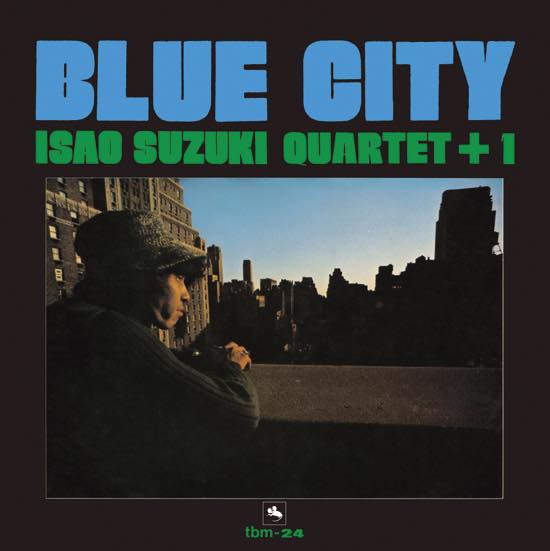
鈴木勲/ブルー・シティ
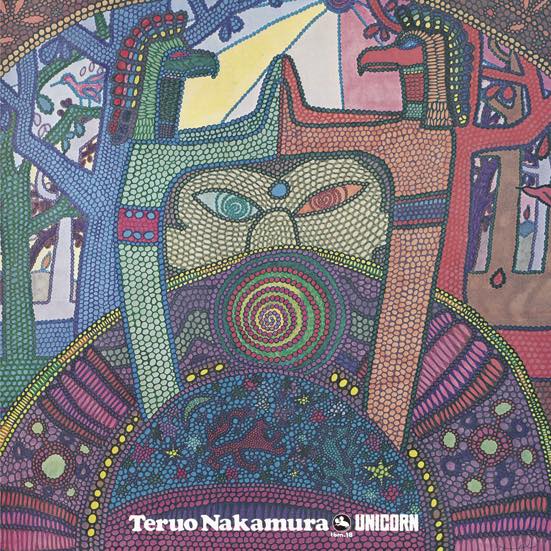
中村照夫/ユニコーン
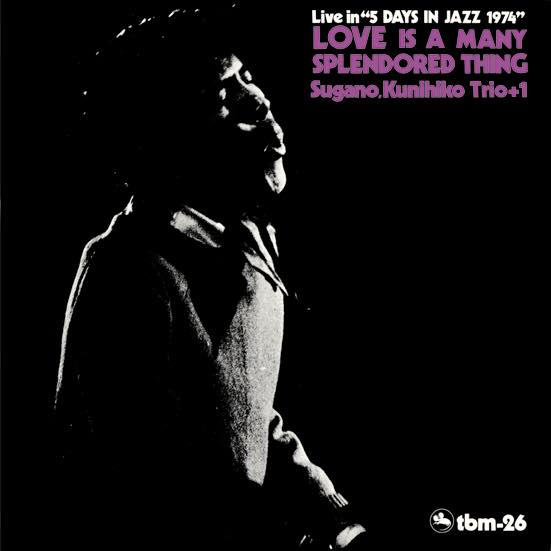
菅野邦彦/慕情


